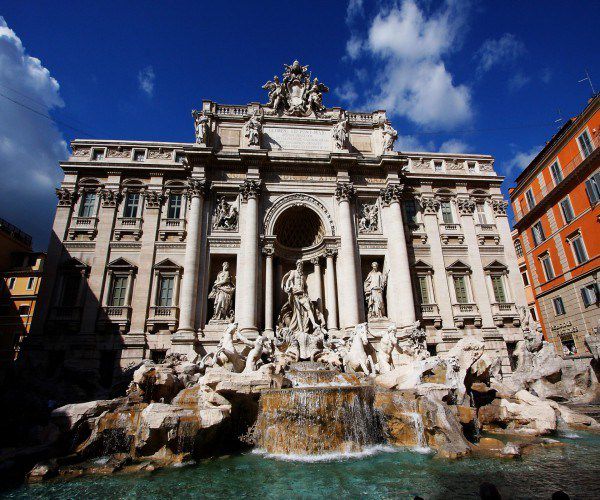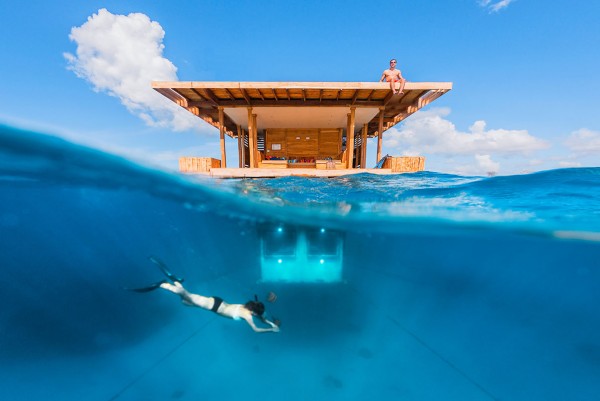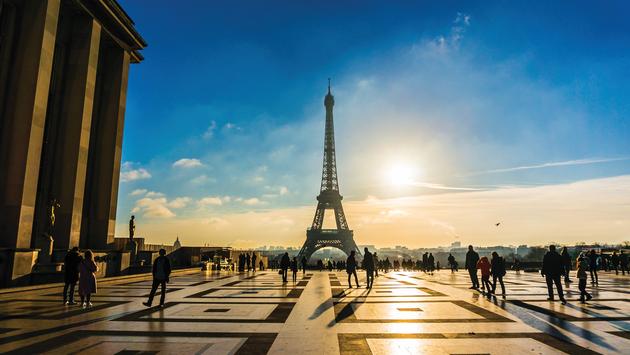Turkish Airlines suspends all international flights
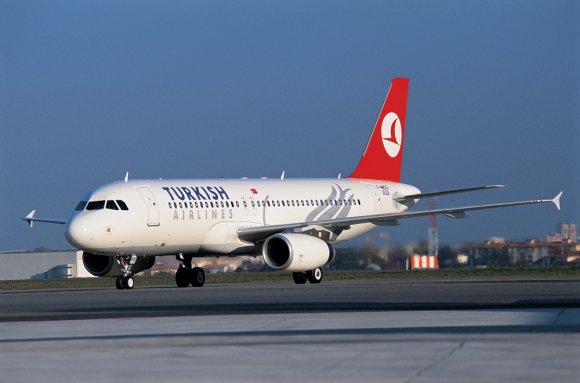
The flag carrier will still fly domestic routes after the Turkish government banned international flights. The Turkish government has announced strict restrictions on flights in an effort to curb the spread of the novel coronavirus, banning all international flights until May 1.
Turkish Airlines is especially impacted and has temporarily suspended all international flights and the majority of its domestic flights.
The flag carrier said it will operate domestic flights on a limited basis to the following cities: Adana, Ankara, Antalya, Diyarbakır, Erzurum, Gaziantep, Istanbul, Izmir, Kayseri, Konya, Malatya, Samsun, Trabzon, and Van. All other domestic flights are suspended until May 1.
All passengers on domestic flights In Turkey will be required to submit an official travel permit document. Passengers without a permit will not be able to buy flight tickets from now on. If they have previously purchased a ticket, they will still not be allowed to board the aircraft without a permit.
Turkish Airlines, a Star Alliance member, normally operates around 265 aircraft to over 300 destinations.
British Airways suspends London Gatwick flights
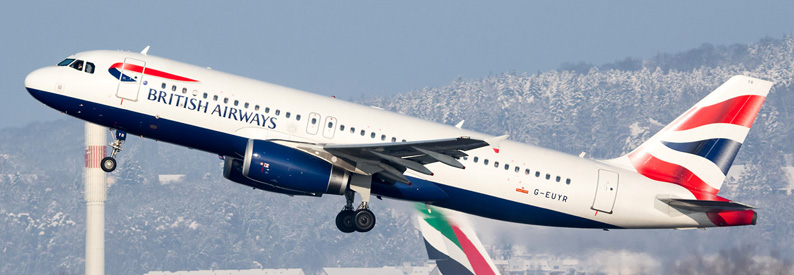
British Airways is suspending flights from London Gatwick (LGW) for the month of April as a temporary measure because of the COVID-19 crisis. Resumption is planned following the COVID-19 crisis.
“Due to the considerable restrictions and challenging market environment, like many other airlines, we will temporarily suspend our flying schedule at Gatwick,” a BA spokesman said.
BA will maintain essential functions at the airport, including maintenance, towing and cleaning, in preparation for the resumption of flights at a later date.
The flag carrier also announced it was moving flights that normally operate from Terminal 3 at London Heathrow (LHR) to Terminal 5, which is BA’s main operating terminal at LHR.
Gatwick is the UK’s second-largest airport, serving more than 230 destinations in 74 countries and handling 46 million passengers a year. The airport is already temporarily shuttering its North Terminal and will only operate from its South terminal from April 1.
The Lax procedures at U.S. airports should concern everyone

What I experienced on my journey back to Philly from India shows how much the federal government is still not on top of things.
I arrived in India on March 7th. I was there to marry my husband for the second time – our first celebration had taken place in Pennsylvania with my family, and our second was to take place with his family in Chennai, India. We departed for our trip long after coronavirus was known to be an issue, but before it had taken on the pandemic proportions it would develop into over the following weeks.
Still, we were surprised at the number of precautions taken when we disembarked in Chennai. The airport had forms printed for us to fill out asking if we had a fever, cough, or other symptoms. We completed two forms, one for the immigration officer and one for a health official. Both were stamped and collected. Then, before we proceeded to immigration, guards scanned every passenger’s temperature.
The coronavirus screening in Chennai on March 7th was orderly, quick, and well-executed. And it didn’t end once we left the airport. As we traveled around India, every hotel checked the temperatures of everyone in our party before we were allowed to enter the buildings. Some required us to fill out a form stating which countries we’d traveled to and if we were at risk. India had far fewer cases than other countries, and yet by March 22nd, India had banned travel from the U.S., among other infected countries, and was under national lockdown with everyone on curfew and commanded to stay at home.
When I arrived back in the U.S. on March 22nd, however, I found our country’s approach to COVID-19 to be decidedly more laissez-faire – which I appreciate when it comes to, say, portion sizes at restaurants, but is not a quality I look for in a governmental pandemic response.
My husband and I finally landed at Newark International Airport after our flight to Philadelphia were canceled three times, apparently owing to both general airline disorder and President’s Trump’s hasty March 13th decision to corral most international flights through just thirteen airports.
That directive itself seems problematic. Rather than corral everyone into thirteen airports, wouldn’t it have been wiser, safer, and just-plain-more-sensible to give every international airport in the U.S. safety directives as to how to handle international arrivals? Check everyone’s temperature, collect everyone’s form. Why pick and choose which countries require basic screening, and which airports can do this screening? And, most importantly, why squeeze all the potentially infected people into the same airports in long lines?
This ill-conceived plan led to general chaos at the U.S. airports, with people trapped in lines in close proximity to one another, creating a perfect situation for spreading the virus.
Meanwhile, for guests who traveled to our wedding in India (which was not a country on Trump’s travel ban list), the journey back was messy and confusing. President Trump’s directive seemed to result in almost all international flights being sent through these gates, and in more flight cancellations stranding Americans abroad. One of our guests was sent through Philadelphia International Airport as scheduled, another was rerouted on a flight to JFK.
The rest of us had our Philadelphia flights canceled and had to rebook flights to JFK and Newark, then had to get on trains or rent cars to get back to Philadelphia. These changes caused us to lose significant amounts of money (we each had to buy entirely new flights from $700 to $1,200 per ticket to get back, plus rent cars), almost get stranded in India, and spend more time in public transit and public spaces.
Maybe it would have been worth it – if all these inconveniences resulted in better screening of those landing in the U.S. from international destinations. But that wasn’t the case.
The CDC protocol for Americans landing from European countries and China (which ended up, in practice, being all international flights) said, “Upon arrival, travelers will… continue to enhanced entry screening where the passenger will be asked about their medical history, current condition, and asked for contact information for local health authorities. Passengers will then be given written guidance about COVID-19 and directed to proceed to their final destination, and immediately home-quarantine in accordance with CDC best practices.”
But when my husband and I and our guests landed in Newark and JFK for this supposed “advanced screening,” there were … mixed results.
One person had his temperature taken and forms collected. Another couple had forms collected but no temperature screening. Most of us 1) didn’t have our forms collected at all; 2) had no temperature screenings; 3) were given no directive by immigration officials to self-quarantine for two weeks; 4) received no literature on staying safe after we landed. We simply boarded trains or rented cars and headed back to Philly.
I had no screening whatsoever and didn’t have my temperature taken, even though it was taken every time I turned a corner in India. The coronavirus forms I diligently filled out are sitting on my dresser, since the CDC and U.S. Immigration neglected to collect them as we were told they would.
I’ll say this: it’s possible taking temperatures at the airport doesn’t do much. It’s also possible immigration officers and the CDC don’t have the bandwidth to examine all of our travel forms. And there’s no question authorities could hand out government guidelines for self-quarantine to all disembarking passengers, and we could toss them right in the trash instead of adhering to them.
But does that mean we shouldn’t be even trying?
If our airports and our country can’t execute even these basic, routine steps to try to keep citizens safe – if the people in charge can’t even pretend they are collecting the forms they’re supposed to, or that they’re concerned about taking temperatures – then what does that say about the ability of our government and our institutions to have any semblance of control in this emergency?
The lax airport procedures are just one microcosm of the failure of our government to deal with this in a serious and intelligent way at the national level. Instead, right now it just seems like one sloppy, “whatever, man” decision after another. And “whatever, man” in a global pandemic means a lot more people are going to continue to die than need to. www.phillymag.com
GPS self-tracking in Hawaii during COVID-19
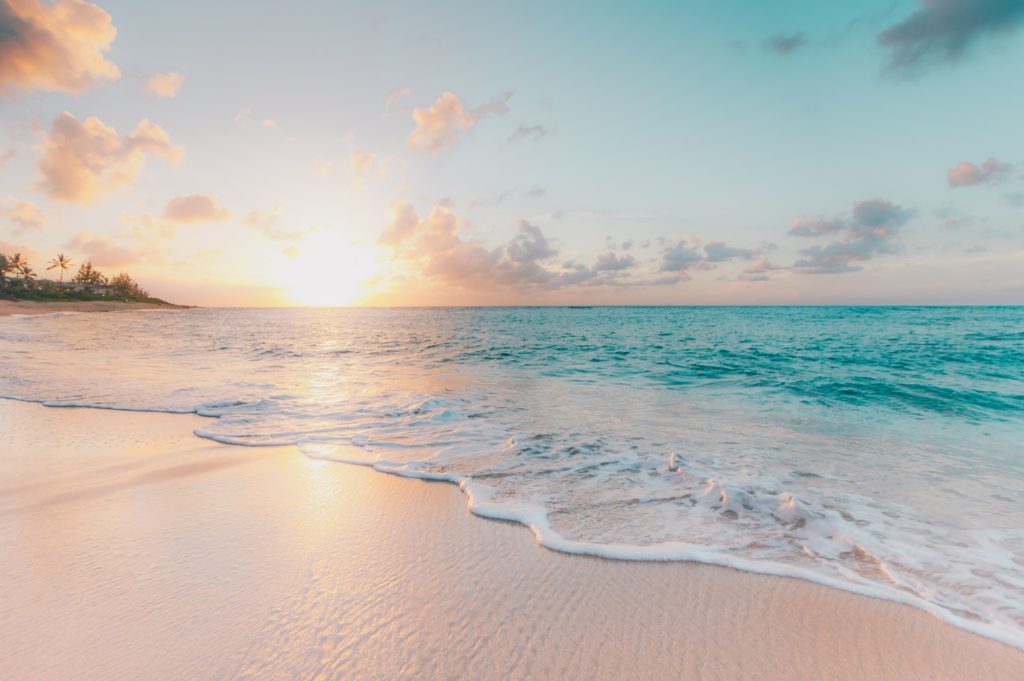
The pandemic is prompting Hawaii’s authorities to consider some extreme measures to contain the spread of contagion. The Aloha State was among the earliest to adopt some aggressive policies to curb COVID-19 transmission on the islands and already requires all arrivals, be they visitors or returning residents, to self-quarantine for two weeks.
Hawaii News Now has reported that state authorities are considering using personal tracking devices to ensure compliance with the rules of quarantine. Failure to comply with the conditions set forth by the governor’s office already bears a hefty penalty—a fine of up to $5,000, a year in prison, or both.
Airlines & Airports
State Attorney General, Clare Connors, told the state Senate Special Committee on COVID-19 that she’s exploring the legality of such ideas about tracking visitors and the constitutional concerns that would be raised by such actions.
“I think it runs the gamut of what they’re doing in Taiwan, which is you wear an ankle bracelet for fourteen days and if it goes outside your hotel room, it pings and that’s the only information that gets conveyed to the 24/7 GPS where we know exactly where you are, what you’re doing at all times,” said Connors.
Attorney Victor Bakke agreed that GPS tracking could pose potential problems. Forcing people to lock themselves down would already be considered a rights violation, he explained, but for the motivations behind it: the current public health crisis and larger concern for the safety of all Hawaii residents.
The outlet reported that, in recent days, visitors to Hawaii who were found to be in violation of the mandatory quarantine order have been cited, arrested and even deported back to the mainland.
Despite deterrents, about 100 visitors continue to arrive in Hawaii each day. Lawmakers reportedly argue that online travel sites are failing to sufficiently inform people about the state quarantine order while displaying cheap airfares and room rates. “It just says your travel may be impacted,” said State Senator, Donna Mercado Kim. “If you go to Trivago, it just says the outbreak may impact your travel plans.”
Arrivals are currently required to complete a questionnaire, supplying contact information, and indicating their designated quarantine location (home or rented lodgings). Senate President, Ronald Kouchi, has called upon Hawaii Governor, David Ige, to adopt more intensive health screenings at airports and proposed that tourists even be escorted from the airport to their hotels.
The Winglet reported that Hawaiian authorities have recently begun more strictly enforcing quarantine policies, verifying mobile phone numbers before visitors leave the airport, and cross-referencing addresses listed on their quarantine forms with property tax records.
An essential roadmap to the re-discovery of Rome and Lazio

I live in Italy, in Rome. My family lives in the north. With the outbreak of the coronavirus, we find ourselves in the eye of the storm. It’s all incredibly calm. Streets are empty. Churches are empty. The cafes and piazzas are empty. There are only people lined up outside the supermarkets. Ten people at a time are allowed, so you have to form a queue. Not something Italians are used to, blogged Davide Bolognesi.
Cities are empty. Hospitals, however, are full. The data from the past two days looks slightly encouraging. But the Coronavirus has taken so far more than 5,000 lives. Some etymologists say “OK” comes from the message “0 killed” or “0 K” used during the American civil war. We long for the day when we can write OK on the board. Meanwhile, we sing the national anthem from the balcony.
Also, we think a lot. We think a lot about the things we miss. Get-togethers. Hugging and kissing. Going to concerts. Travel. One wonders naturally about the meaning of traveling at the time of social distancing because traveling is mainly traveling towards the other. Life itself is a journey. One wonders: Can intelligent life even exist on this planet without travels? Is traveling itself going to become luxury?
Walking around Rome these days is a unique experience. I think of a time when Rome was all countryside — flocks of sheep taking over the Roman Forum. The air is cleaner, the boisterous streets are silent, and as I reach the basilica of St John Lateran, it stands grand and lonely in the middle of empty space — as it did maybe 1,700 years ago (roughly) when it was founded. It is like traveling back in time. Famous monuments you are so used to seeing now appear under a new light. They are so new and beautiful that for a moment you have that “feeling of the first time.” With the Coronavirus breakout I thought at first: Why Italy? It’s an instinctive, selfish thought. But, as this pandemic unfolds I had the time again to consider how much I miss my own country. How much I miss the opportunity of traveling — all over the world, yes, but especially to Italy. Because now I know that nothing will be the same again. That I will look at old and new things with the same genuine eyes of an enthusiastic child. I am happy to have been born in Italy.
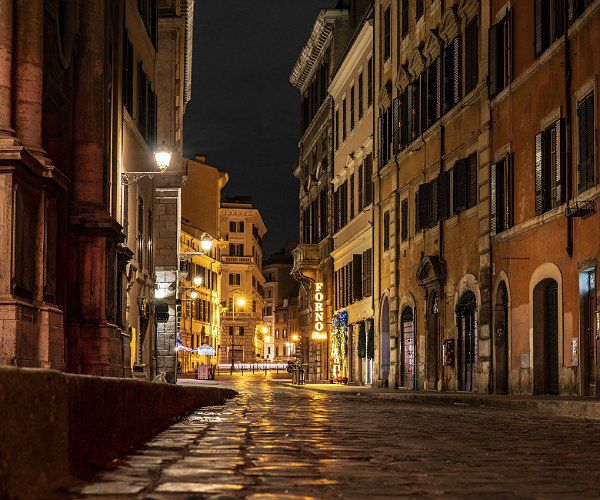
At the time of social distancing, we crave human contact. At the time of travel bans, we accumulate a greater desire to travel and make the most of our time on planet earth. I don’t want to waste this time. I want to be ready for what comes next. So I decided to scribble down an essential roadmap to the places I want to visit or visit again, as soon as the restrictions placed upon us are removed.
I will start from here, Rome and Lazio, with the promise of more to come. So, here it is. An essential roadmap to the rediscovery of Rome and the ancient region of Latium, with carefully selected places far from the mainstream. A roadmap for sophisticated and curious travelers, who aren’t satisfied with the Colosseum and Vatican City.
Caprarola
I add to this list the amazing Palazzo Farnese of Caprarola, a unique place where the Farnese family, one of the most powerful families in sixteenth-century Italy, built one of their stunning retreats, a grand villa with rooms and decorations so beautiful that it’s often used as a movie set. Director Fernando Meirelles has recently chosen it as a location for his movie The Two Popes, now on Netflix.
Tivoli

One of the most fascinating places outside Rome with not one but two UNESCO heritage sites: Hadrian’s Villa and Villa d’Este. Once there, you also might want to look for Ristorante Sibilla for a special luxury treatment and have a romantic dinner under the columns of an ancient pagan temple. With time at your disposal, visit the Park of Villa Gregoriana will make a perfect day more perfect.
Civita di Bagnoregio
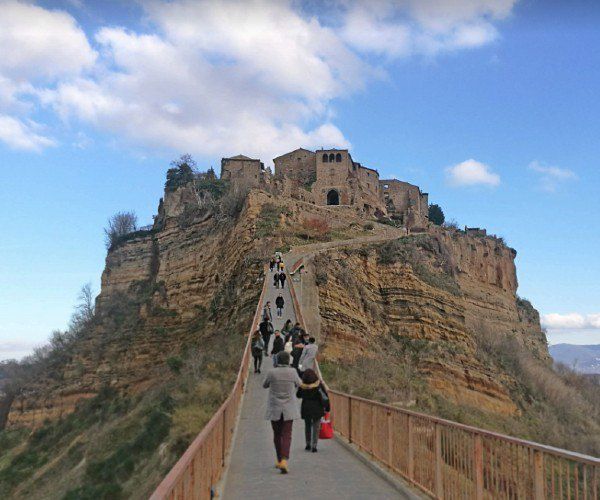
A medieval village built on top of a small and steep mountain that can be reached only through a bridge on foot. Crossing the bridge is like traveling back in time. The mountain is now slowly crumbling, so they call it the dying city. But the place itself is so wild and beautiful that I am in awe every time I go.
Castelli Romani
From antiquity to the Renaissance, the Roman aristocracy has chosen the Castelli Romani to spend the hottest days of the summer. These small villages East of Rome are unique for a number of reasons: amazing food, great weather, stunning viewpoints, and famous villas. This is my checklist: Going to Ariccia to eat the famous porchetta; visiting Castel Gandolfo to visit the Papal summer residence (and then eat on the belvedere facing the volcanic lake); visiting Frascati and the magnificent park of Villa Aldobrandini.
Anagni
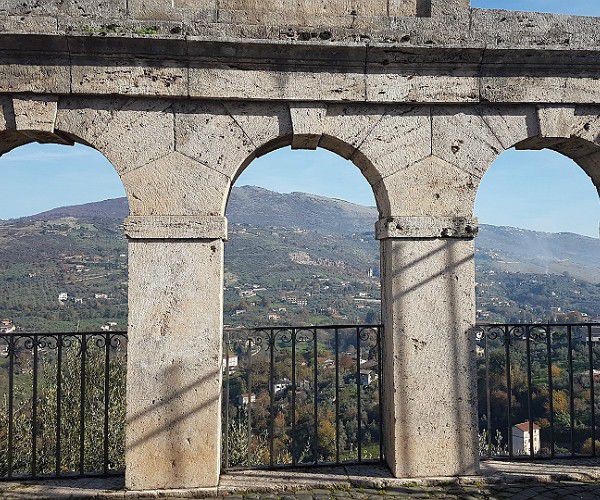
Spend a nice afternoon visiting the ancient village of Anagni, hometown of the pope Boniface VIII, Dante Alighieri’s great enemy. The Crypta of St Magnus inside the cathedral is so special and beautiful they call it the Sistine Chapel of the Middle Ages.
Subiaco
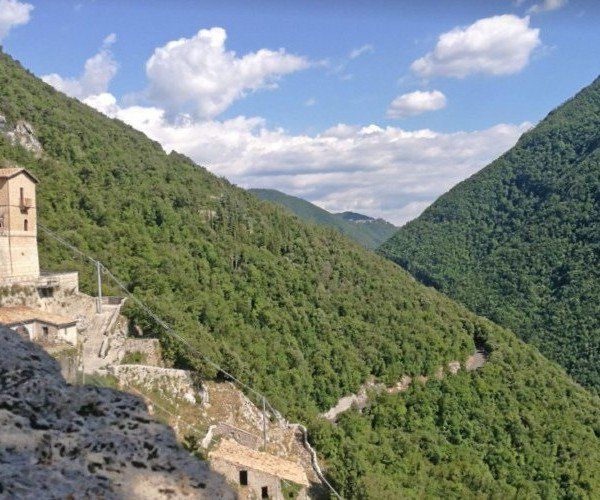
A place of beauty and solitude. Subiaco was Nero’s imperial retreat in late antiquity and it still is an amazing place where you can rest your body — and soul. St Benedict founded his first convent here in the VI century, now called Monastery of Santa Scolastica as well as his spiritual retreat called Sacro Speco, a must-see monastery carved into the rocky side of a mountain. The place also contains the only portrait of St Francis painted when the saint was still alive.
Porto Fluviale
I make an exception to my list. After Trastevere, Porto Fluviale near Ostiense is becoming the new fancy neighborhood of Rome, with its street art, music scene, and trendy restaurants. Given the restrictions placed upon us, I would consider a luxury experience getting lost in a neighborhood following the crowd, the instinct, and the narrow streets full of bars and nice restaurants.
The unspoiled Spanish island of La Palma
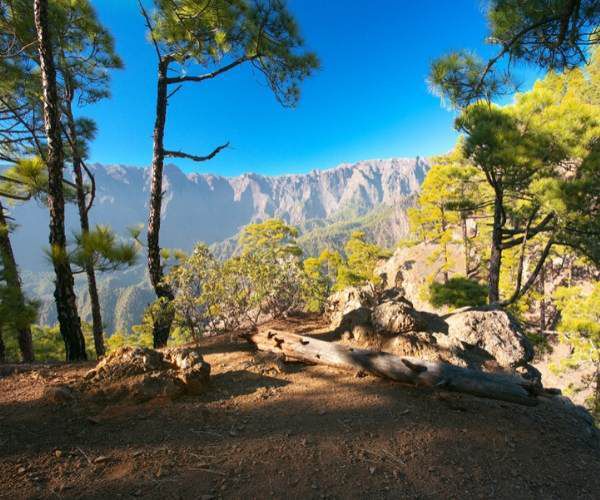
The recent outbreak of COVID-19 has certainly had a profound impact on the travel industry in a way that has never been experienced before. With travel professionals seeing a sudden downturn in people exploring the world, now is perhaps a time to re-evaluate what travellers may be looking to experience when holidays can, once again, be placed on people’s agendas. With individuals and families having to spend so much time confined to their homes, getting back to nature will be a welcome opportunity to see somewhere new when travel becomes safe for everyone.
One such year-round destination would be the Spanish island of La Pama in the Canary Islands. The northernmost of the islands, La Palma has been declared as a World Biosphere and Starlight Reserve. The island’s nickname is “La Isla Bonita” – the pretty island – and is certainly justified once you see its: outstanding natural beauty, fantastic hiking paths, unique starry skies, black sand beaches and small coves, wonderful traditional cuisine and wines.
What can you expect whilst you are there? We’ve put together just a few of the highlights you can experience whilst on you La Palma holiday, blogs Gail Hewitt.
Hiking network
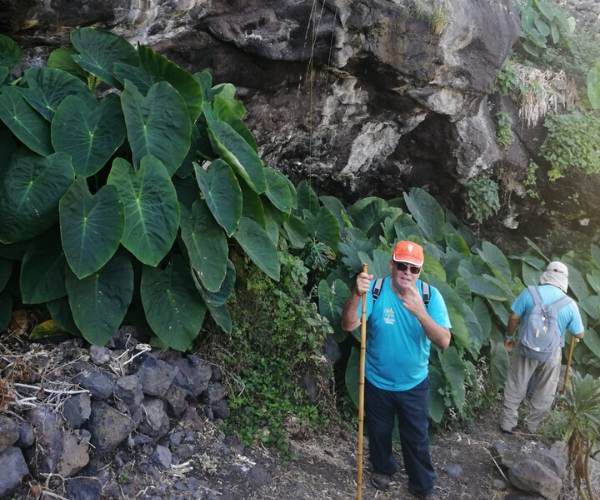
Take full advantage of the huge network of walking routes (Senderos) available on this hikers paradise island.
With hiking being one of the major attractions for tourists to the island, the 1,000km (approximately) of footpaths that have been fully signposted by the European Ramblers Association. You will find trails leading to every corner, enabling you to take in the huge variety of Canary pine trees, laurel forests, and coastlines. As an example, there are two long distance routes (GR routes), 20 one-day routes (PR routes), and numerous local routes that are shorter than 10km (SL routes). In fact, there are trails to suit all levels of fitness, from the beginner to the more experienced.
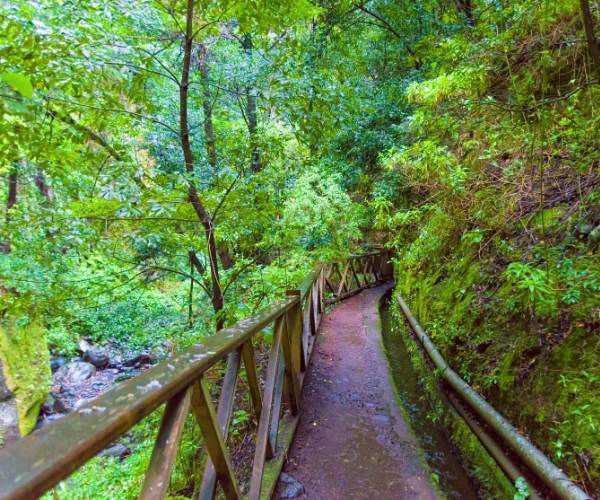
Probably the most famous is the Ruta de los Volcanes which is a tough 6 hour hike along an active volcanic ridge ending at the coast at Faro de Fuencaliente.
Observatorio del Roque de los Muchachos
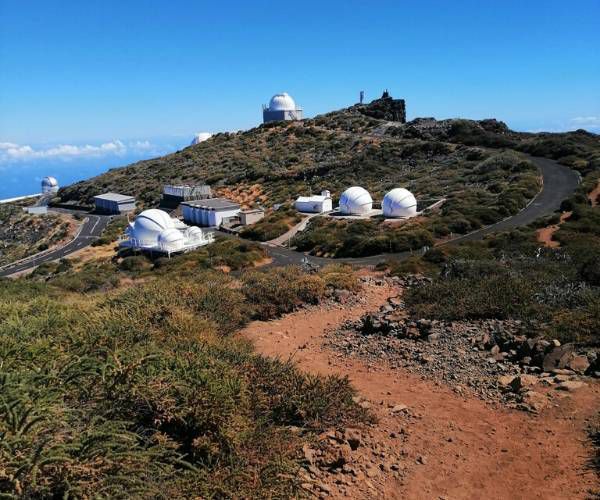
With some of the clearest skies in the northern hemisphere, the island of La Palma has strict laws to protect it against light pollution. This is why La Palma is home to one of the largest single optical telescopes in the world – the 10 meter Great Canarian Telescope. This is located in the Observatory at the Roque de los Muchachos on the highest point of the island. The Observatory can be visited every day but bear in mind that you can only enter the Observatory itself on two days in July and August.
Mirador de la Cumbrecita
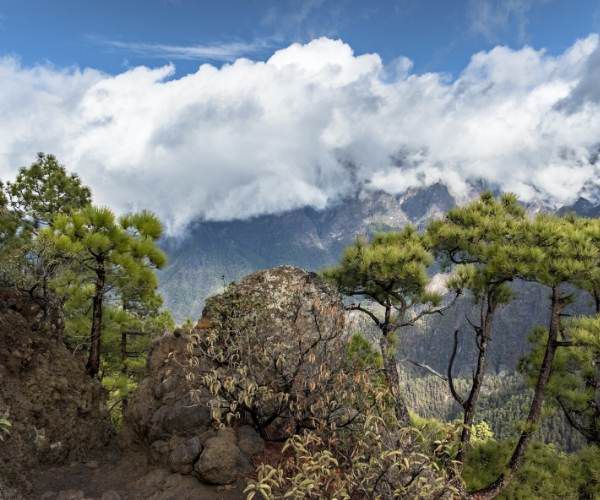
Take time out to visit this Mirador (viewpoint) to experience the wonderful views from the southern ridge of the Taburiente crater which is approximately 6.5 km wide. This is also the starting point for many hiking trails.
Caldera de Taburiente
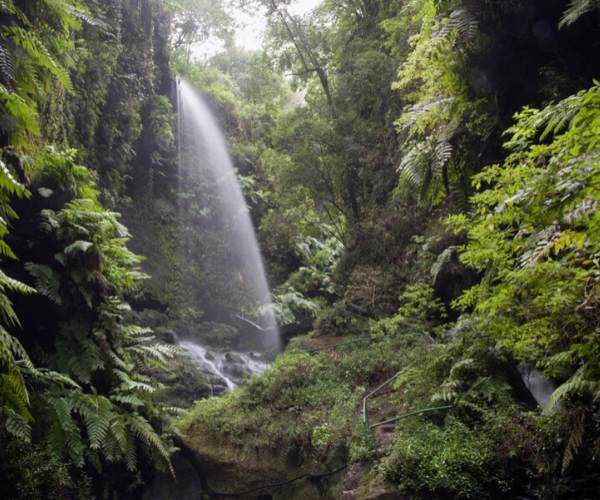
This is La Palma’s national park, one of the most popular places for people to visit, and certainly not to be missed. The best part is possibly the Barranco de las Angustias which is an 8km long, horseshoe shaped area, with stunning scenery including deep ravines, cascading waterfalls, rock carvings, jagged cliffs, and archaeological sites left by the original inhabitants of the island.
Beaches and natural pools
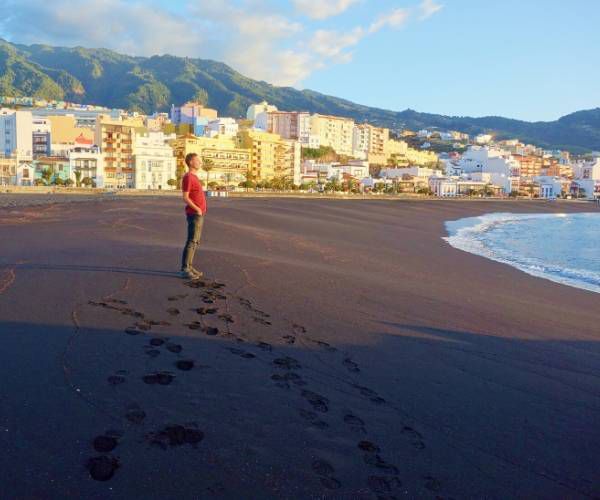
There are many black sand beaches around the island that are safe for swimming, and ideal for sunbathing. You can also experience swimming in one of the natural seawater pools.
The pools are natural formations where the sea water enters without human intervention. You will find steps to enable access, and a wonderful way of swimming in the sea water whilst being protected from any currents or waves. If you’re not sure when you want to travel again, don’t be too concerned as during both the winter and summer months you are able to take a dip in the sea due to the excellent year-round temperatures. Be aware though as the Atlantic Ocean can have currents and waves, so be sure you are swimming with safety in mind.
Architecture

Walking around La Palma, you will see different types of architecture. From its churches, central courtyards, and wooden balconies, you’ll feel the history surrounding you. If you’re in the capital of the island – Santa Cruz – take a walk along Calle Real. Here you’ll find a cobbled street and some traditional wooden balconied houses. An ideal location for a picture-perfect Instagram snap.
Cigar Making
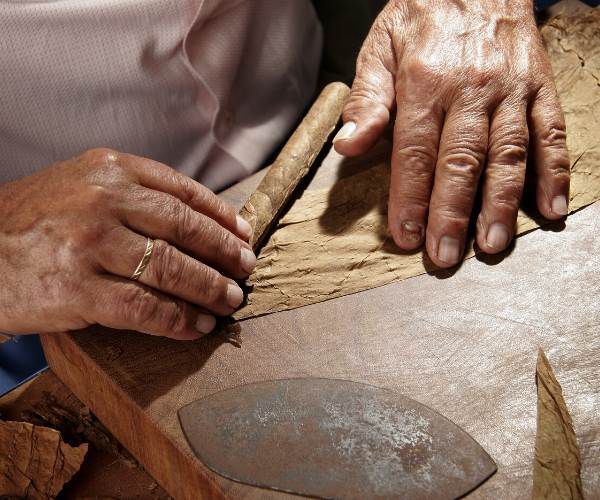
One of La Palma’s traditional crafts is the art of cigar. Palmeran cigars are famous for their quality and aroma. Cigar making was introduced to the island in the 1950s and the pick of the crops are harvested in various regions around the island.
Visit the Museo del Puro (cigar museum) where you can watch the skilful art for yourself and even ask questions of the artesans. You’ll learn more about this art, from cultivation through to the end product. Signage and videos are in English, Spanish and German and with the entry of approximately 3 euros per person, this makes a great day out. Visit the museum Tuesday – Saturday between the hours of 10:00-13:00.
Stay for a while and visit the restaurant located next door – a place visited by the locals as well. You can also wander the market stalls at weekends selling fruit, vegetable and local produce including cheeses, prickly pears, fresh sugar cane and of course La Palma bananas.
Local wines
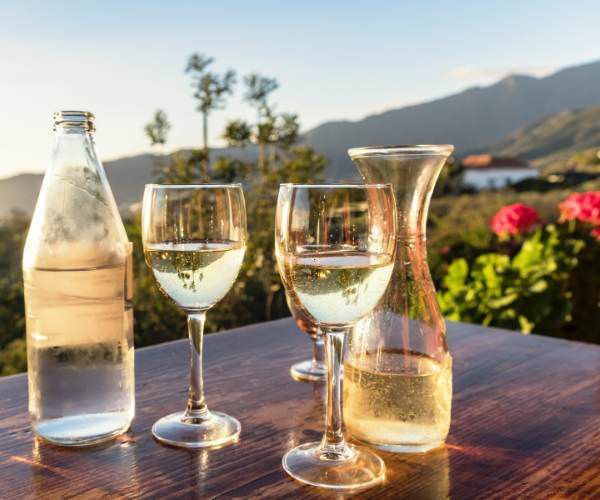
Probably the best known winery is Teneguia Winery (Bodegas Teneguia). This winery has been making wines for over 60 years including white, rose and red. Located in the south of the island of La Palma, in Fuencaliente, the grapes are harvested from the organic soil. You can visit here and take a guided tour of the winery to learn more about wine production, vine growing, and bottling. End your visit with a meal in the restaurant and in the shop where you may want to purchase a bottle of local wine.
At the moment, travelling will of course be the last thought on your mind and you unfortunately need to be content at being an armchair traveller. However, once the COVID-19 outbreak comes to an end and travel restrictions are lifted, perhaps you can travel with us to the unspoiled island of La Palma. We trust you all take care during these difficult times.
Hotels giving out deep discounts for future travel
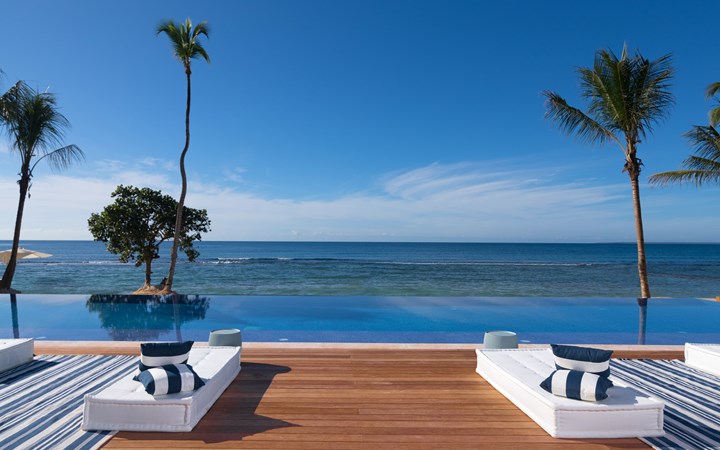
Hotel groups have come up with the idea of selling credits that can be bought at a discount to be used for future room nights. If it works, hoteliers make a dent in their massive losses and customers get a big break on a future hotel stay. Whether or not it ends up making much of an impact, the concept shows that the hotel industry is at least trying to think creatively as it faces one of its biggest crises ever.
The deals vary. Oxford Hotels & Resorts, which is testing the idea at four of its upscale hotels in its hometown of Chicago, is selling $100 “bonds” good for $150 in credit for use after 60 days. At least two other sites are letting hotels set their own deals.
Hotels make no qualms about it: they need the money. Occupancy fell 64.4% to 23.4% from the week ending April 18 compared to the same week a year ago, data firm STR reports.
Hotels offered through his site vary widely, from the two-star Rodeway Inn in Urbana, Illinois, to the five-star Casa de Campo Resort & Villas in the Dominican Republic.
The notion of buying credits for discounted future stays may sound like easy money for those with cabin fever, but one analyst urges caution.
Oxford’s Jordan says the notion of selling future stays may kindle a bit of travel fever and lift the spirits of would-be travelers stuck at home.
“Everyone worries about how they are going to put food on the tables tonight, so (travel) is not the highest priorities,” he said. “But I want people to think about the good times, too. The world will start spinning again.”
Atelier Crenn – Dominique Crenn San Francisco

Dominique Crenn’s Atelier Crenn, arguably the world’s only restaurant where, in place of a standard menu, guests receive an original poem, with specific lines of the poem loosely corresponding to the experimental, naturalistic dishes.
Behind an unassuming façade mere steps from the San Francisco Bay, Dominique Crenn offers a multi-course experience in a homey and luxurious dining room. Atelier Crenn is an homage to her father, Allain, with his paintings hung upon the walls. Each guest is greeted with a poem, each line symbolizing a presentation in the meal. The menu is focused on seafood and vegetables, drawing from the memories of her mother’s garden in Brittany through the lens of California product and produce. Inspiration for the creations are often very personal and rooted in a sense of constant evolution. The wine list offers a tiered pairing as well as a curated selection of glasses and bottles from our cellar. We select winemakers from around the world that believe in thoughtful stewardship of the land as the key to creating wines of intrigue, varietal expression and regional character.
Chef Dominique Crenn offers a multi-course tasting menu experience for $335. Wine pairings begin at $220. The service is included. Dietary requests are happily accommodated with 3 days’ notice. Please note your requests when booking your reservation with us.
Reservations for 1, or Parties of 5-6, please call the restaurant directly at 415-440-0460. We will happily get you settled in.
Their dining space is intimate, with only 8 tables. Atelier Crenn offers two seating turns each evening – please plan accordingly in order to arrive on time for your visit.
The best luxury watches for diving and snorkeling

There are many different things to consider when it comes to selecting the perfect luxury accessories to any hobby; style, luxury, dependability and usefulness are all factors that come to mind, and diving watches are no different. When you are going to be diving or snorkeling, you want a watch you can not only count on to withstand the physical trials of the ocean, but also look good when you return to port and sit down for a cocktail with friends. With these important factors in mind, we have compiled a list of the 3 best luxury diving watches ever made.
Omega Seamaster
Omega is also the watch of choice for many famous faces including Prince William, George Clooney, Nicole Kidman, Michael Phelps, and even the fictional spy James Bond. In fact, it was current Bond actor Daniel Craig that was first seen sporting the Omega Men’s Seamaster 2220.80.00 in the 2006 film “Casino Royale.” Now dubbed “the James Bond watch,” the Seamaster has become the must-have Omega dive watch and has become a symbol of true class and style. This model boasts an anti-reflective, scratch-resistant dial window and is cased in brilliant stainless steel. It is water-resistant to up to 1,000 feet, and thus is more than capable of meeting all your diving and snorkeling needs.
Rolex Deepsea
Rolex was the first watchmaker to create a model that was water-resistant and was tested by famed oceanographer Jacques Piccard in 1960. Rolex is the largest single luxury watch brand and produces an estimated 2,000 watches per day.
Rolex’s deep-sea dependability continues to this day with the Rolex Deepsea. This beautiful model is designed for true deep-sea exploration and is designed to handle depths of up to 12,000 feet. The model features a black, scratch-resistant Cerachrom disc with a titanium caseback.
The double extension band was crafted for the Rolex Deepsea model so the watch can fit over both wrist and dive suit. Its lightweight design makes it a favorite among both professional divers and those who dive and snorkel as a hobby.
Jaeger-LeCoultre Master Compressor
One such timepiece ideal for watery adventures is the Jaeger-LeCoultre Master Compressor. Built to resist depths of up to 3300 feet, this watch is more than capable of handling all your ocean-related adventures. This piece boasts a sapphire dial window and a stainless steel case with a black leather strap and also features a second time-zone window, so you’ll be able to keep track of the hours wherever your travels take you. The watch face also boasts a depth-gauge meter, so you’ll always be able to keep track of just how deep you’re diving.
Great underwater destinations in the US
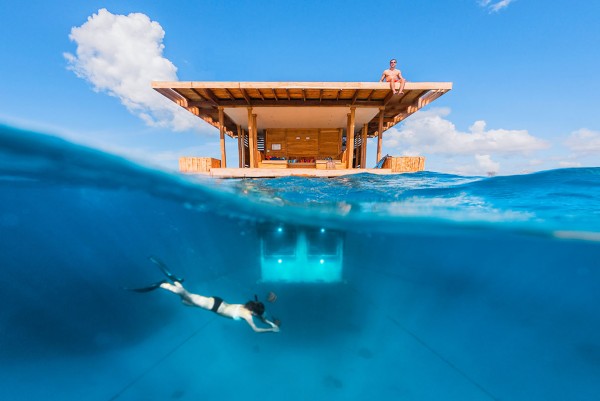
It’s true that many of the world’s most coveted scuba diving and snorkeling destinations are located outside of the U.S. However, there are plenty of underwater spots Americans can visit without the benefit of a passport. Consider one of these beautiful places.
East Coast & Caribbean
York, Maine
Visitors to New England will be drawn to the stunning plant and animal life that lurks below the surface near Cape Neddick in York, Maine. This is also one of the most picturesque diving sites in America thanks to the iconic Nubble Lighthouse.
Morehead, North Carolina
Scuba divers taking the plunge in Morehead City, North Carolina can come face to face with the spectacular sand tiger shark. In fact, it’s one of the few places in the country where you can swim with sharks safely.
Florida Keys
A premier destination for snorkelers and divers, the Florida Keys is home to the Diving Capital of the World in Key Largo. This beautiful island chain also boasts North America’s only living coral reef in addition to numerous diving shops, instructors and tour operators ready to ensure a once-in-a-lifetime underwater experience.
Crystal River, Florida
Some of the best snorkeling and diving in the Sunshine State can be found 90 minutes north of Tampa in Crystal River, which is the only place in the U.S. where you can legally swim with manatees.
Emerald Coast, Florida
Scuba diving and snorkeling in Florida isn’t limited to the Keys. The Emerald Coast comprising Destin, Okaloosa Island and Ft. Walton Beach offers miles of vibrant waters that divers can explore with the help of Emerald Coast Scuba and Destin Snorkel.
Steps Beach, Puerto Rico
Located on Puerto Rico’s western coast in the Tres Palmas Marine Reserve, Steps Beach is unique in that it’s among the few places in the U.S. territory where visitors can snorkel from shore. Plan your trip between April and August to take advantage of calmer waters.
US Virgin Islands
Like Puerto Rico, American citizens don’t need a passport in order to experience the U.S. Virgin Islands of St. Croix, St. John and St. Thomas. Even beginners will love Trunk Bay as the Underwater Trail here makes it incredibly easy to experience mesmerizing coral and fish up close.
West Coast
Monterey Bay, California
Monterey Bay attracts tens of thousands of divers each year as the national marine sanctuary here features ideal visibility as well as safe conditions. Nonetheless, visiting divers will want to pack a wetsuit as the water can be quite chilly at times.
Catalina Island, California
Bellingham, Washington
You won’t need a passport to go diving near Bellingham, which is about 90 minutes north of Seattle just east of Washington’s San Juan Islands. Local scuba instructors make it easy to learn the ropes to explore below the surface of the Pacific Northwest.
Baranof Island, Alaska
Alaska’s Baranof Island is home to the country’s second-largest city by land area in Sitka. Visitors to this region of the Last Frontier will find exceptional diving opportunities, including rocky reefs and stunning kelp gardens.
Hawaii
Oahu
Oahu is the place to interact with a slew of magnificent marine animal species, including the rare Hawaiian monk seal. First time diving? Oahu Diving excels at providing beginners with an unforgettable underwater journey.
Kauai
Elsewhere in Hawaii, Kauai boasts some of the world’s most diverse marine life. Experienced divers who haven’t been yet should add the Garden Island to their bucket list as they’ll have a chance to spot the endangered Hawaiian green sea turtle, schools of colorful fish and a whole lot more.
Kona
Big Island Divers has you covered when it comes to diving and snorkeling experiences from Kona, including daytime scuba dive charters, nighttime reef dives and unforgettable snorkeling excursions to see dolphins, Manta rays and much more.
Maui
A diver’s paradise, Maui boasts a handful of can’t-miss underwater sites, including the Lanai Cathedrals, which are caverns 50 feet deep comprising a wide variety of marine life ranging from sharks and dolphins to turtles and so much more.
Lake and Aquarium
Atlanta, Georgia
Similar to Denver, visitors to Atlanta can dive alongside majestic marine creatures at the Georgia Aquarium. The attraction’s Journey with Gentle Giants program is the only opportunity in the world where you’re guaranteed to dive with whale sharks. Guests will have the help of a trainer, spend as many as 30 minutes in the water and even take home a souvenir photo and t-shirt.
Denver, Colorado
Thunder Bay National Marine Sanctuary, Michigan
Divers looking to explore one of the world’s best collection of shipwrecks can’t go wrong in Thunder Bay. The Joseph S. Fay and the William P. Rend are among some of the National Marine Sanctuary’s most coveted wrecks.
Port Washington, Wisconsin
Health and rejuvenation in Provence
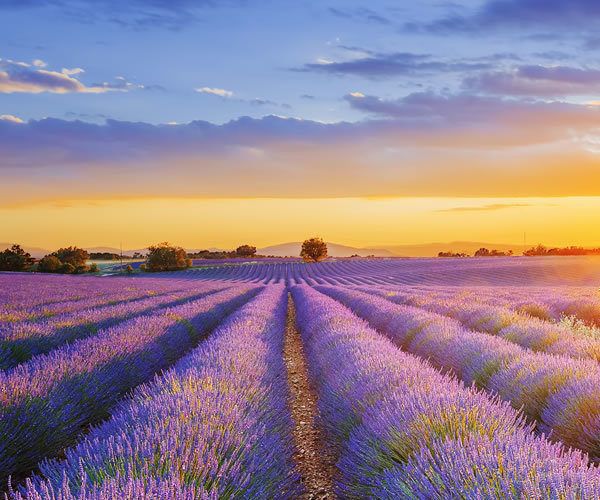
Under normal circumstances, many of us would choose to visit a beautiful place like Provence to enjoy some rest and rejuvenation in order to improve our health and wellbeing. In the midst of today’s Coronavirus pandemic, health concerns are an order of magnitude more serious. Whilst travel plans for the immediate future have been put on hold, it’s important that we stay positive and look forward to the coming months when hopefully the Coronavirus epidemic will be behind us. Perhaps one positive to come out of this crisis will be that people take more time to look after what is really important… their health. And there is no reason why health and travel have to be separated, blogs Su Stephens.
Even prior to the Coronavirus outbreak authentic and wholesome experiences were replacing traditional holiday getaways. ABTA reported that more people than ever are seeking new ways to alleviate stress, reduce illness and boost wellbeing. We’re even acknowledging men’s mental health. Women are striving to be strong, not skinny. Now nourishing, not starving. Therefore, it’s hardly surprising that more and more are taking advantage of the wellness preferences across Provence. From healthy hikes to serene spas and wholesome cafes, the global wellness market is now worth more than double general tourism. Best of all, France is far more accessible than heading to the Himalayas to douse ourselves in holy potions.
Provence sees health, not as a trend, but something that is passed down through generations and this is sure to continue in the future. Yet even traditional, elegant and understated Aix sees transformation stirring. Social media has energized the town. For instance, you can now easily find a yoga instructor, through Instagram. Guests of Provence often seek experiences to rejuvenate, heal and gain self-confidence; as well as wanting to totally disconnect from the hectic pace of life at home and work. Often with a digital detox.
Eating according to the seasons is obligatory in Provence as everything comes from either the garden or the market. The French always treat their meals as sit-down affairs. You will never see anyone eating on the run. Yet in contrast to the purist discipline of wellness, the Provence way is all about moderation rather than abstaining. The French are firm believers that less is more.
So, when the world returns to some semblance of normality, we hope you are able to find the time to take an extremely well deserved holiday and one that fully refreshes both your body and mind. Hope is incredibly important in times like these and to help give you something to daydream about I’ve listed just a few wellness activities you could choose to enjoy in the future here in Provence. But of course, these activities are not limited to Provence and perhaps will give you some ideas on ways you can look after yourself even during these testing times.
Hiking in Provence
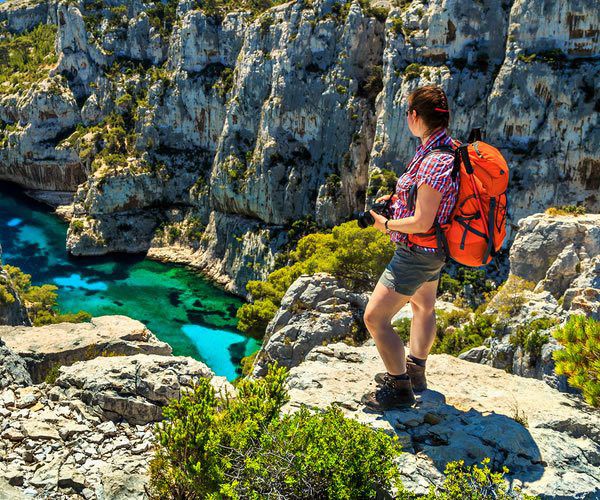
Trekking up the positive Provençal trails is the preferred alternative to standard gym workouts. The combination of physical exercise and mental relaxation is exhilarating.
Take a picnic or simply just meander to smell the wonderful wild herbs. Marching up the limestone mountain ridge of Montagne Sainte-Victoire from the hamlet Saint Antonin is a popular trail. As if you needed any more persuasion, this mountain was a source of inspiration for both Paul Cezanne and Pablo Picasso.
We’re all being advised to limit our contact with others, but in most countries there has been a recognition that some exercise is important. Well, a walk around your local park might not quite be like hiking in the Calanques but none-the-less it offers a welcome change of scenery, some fresh air and hopefully a burst of sunlight.
Fresh-pressed juice

Juice bars are increasingly squeezing up against the traditional pavement cafés. Juice Lab on Rue Nazareth, Aix-en-Provence are known to discontinue certain blends if they cannot serve them perfectly fresh.
They have post-workout wake-up juices, and their avocado toast is a firm favourite for a quick bite. In typical Provencal style, they alter their menu according to which fruit and vegetables are available. At the moment, fresh fruit and veg may be in short supply or perhaps you have stockpiled some that are now looking a bit past their best… well juicing or blending them is the ideal way of using these up. It’s a delicious way to enjoy fruit and vegetables whilst also giving you a great hit of vitamins.
Rosé at sunset

It is criminal to visit Provence without savouring their distinctly world class wine. And it tastes best being sipped at sunset and al fresco.
Casual, light and easy is the manner in which it is served, together with how it should be enjoyed. But why wait until you get to Provence? If possible, keep a couple of bottles of Rosé in the fridge to enjoy at home. Even without the sunset, Rosé can make you feel like you’re on holiday regardless!
Relaxing baths
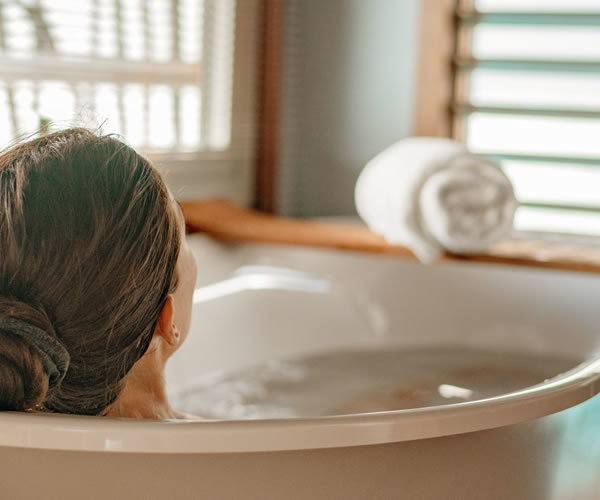
Baths are the best remedy to relax and detox as they create a moment to slow down our hectic routines. Infuse your bath with muscle relaxing salts from the Camargue region or bath oils with sweet soothing orange blossom. The French will often then immerse into icy waters in antique tin tubs. Incredibly anti-inflammatory, and definitely relaxing!
And at times like these why skimp… put the hot water on and run yourself a deep luxurious bath to enjoy at home.
Spa treatments
Local spas house aestheticians who blend local essential and plant-based oils. These ingredients will be freshly mixed and immersed into your skin through calming facials that are like no other. Here are a few suggestions for you to try:
27, Rue Mazarine
This is a city spa, so there are no landscaped gardens or outside pools. Utterly divine, it retains a heavenly cosy atmosphere as it’s entirely underground. Centrally located in Aix, it has a beautiful pool and several massage rooms, as well as a sauna. Furthermore, it’s one of the few places in the region that you’ll find key make up brands (such as Laura Mercier). It’s where the ladies that lunch congregate before lunch. The ideal place to escape the hustle and bustle.
Thermes Sextius
The Thermes Sextius in the centre of Aix en Provence is built on the site of the old Roman Baths. It enjoys its own unique water source down to 80 metres in depth which is naturally kept at 33°C. Now a major hydrotherapy centre, it is established as a celebrated place to unwind on holiday. A blissful place to submerge in the baths or float away during a massage.
Les Lodges Health Spa

Les Lodges is a relatively new spa to the area having been built in the last few years. Found situated on the beautiful winding road that runs under the Sainte Victoire mountain, in between Aix en Provence and the charming village of Le Tholonet. It has one indoor and one outdoor pool, and a series of treatment rooms. The atmosphere is cool, calm and completely marvellous.
And whilst a trip to the Spa is off the cards at the moment, a pampering session at home always lifts the spirits. Now is the time to use the lotions and potions that get given as gifts that many of us store carefully away but never have time to use!
Previously, those seeking ‘well-being’ were people with a lot of free time. However, today most wellness consumers are decision-makers, with very limited time. Time has become much more valuable than money. Happiness is essentially the secret ingredient to health and wellness. Nowadays, as the majority of holidaymakers value their mental and physical health more, they invest more in holidays that work with their bodies and minds, rather than against them. As opposed to ‘escaping’ life, today’s tourists are looking for a beautiful environment with delicious nourishing food, healthy activities and sparkling sea views to increase their happiness.
I’m sure we all yearn for a return to times where we can freely travel and this epidemic is a distant memory. Until then, do take the best possible care of yourself.
South African Airways struggles to survive

South African Airways has asked the South African government for a third extension to gain more time to revitalise itself.
The airline has struggled financially for the past few months with issues with management, aircraft and competition from rivals. This led to it being placed under the care of a business rescue firm run by Les Matuson and Siviwe Dongwana in 2019.
However, the partners have had to request a further extension from the Government for their turnaround plan as they faced issues with union disputes and withheld funds. The severe impact of the coronavirus lockdown has led to minimal travel options for the airline and a decrease in passenger demand.
South African Airways has had to restrict its regional African routes as well as international connections, forcing most services to be grounded. Currently, it only operates domestic shuttle routes between Johannesburg and Cape Town.
In order to rescue the airline, it may have to make significant staff cuts and ground a sizeable percentage of its fleet.
Iceland in the Summertime
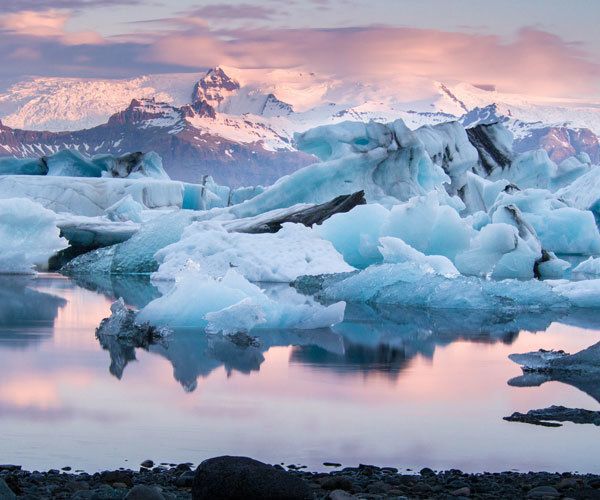
Where will you be heading when it is safe to do so? And have you ever thought about visiting Iceland in the Summer? Maybe you have heard that Iceland is a must-see location – a land full of lagoons, waterfalls, mountains and lakes. If so, what you have heard is absolutely right! Iceland is truly a dream location to visit in the Summer; it’s a time when the country presents the visitor with adventurous opportunities and long days.
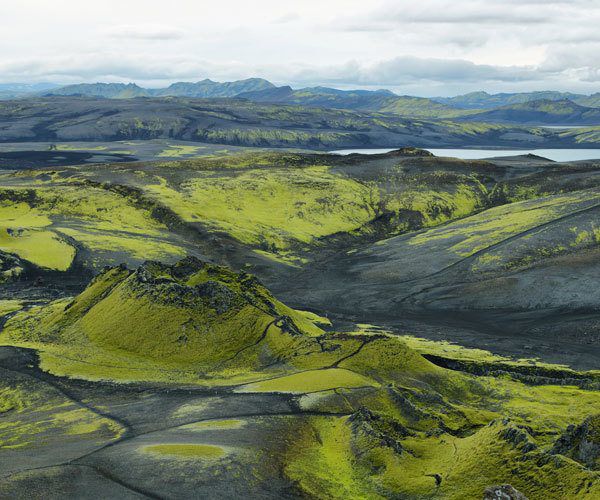
So what kinds of adventures can you actually enjoy in Iceland? Read on to learn just some of the undeniable reasons for visiting this beautiful country and soon you’ll hopefully be convinced to choose Iceland as your next holiday destination, blogs Sigurður Magnússon.
24-hour daylight
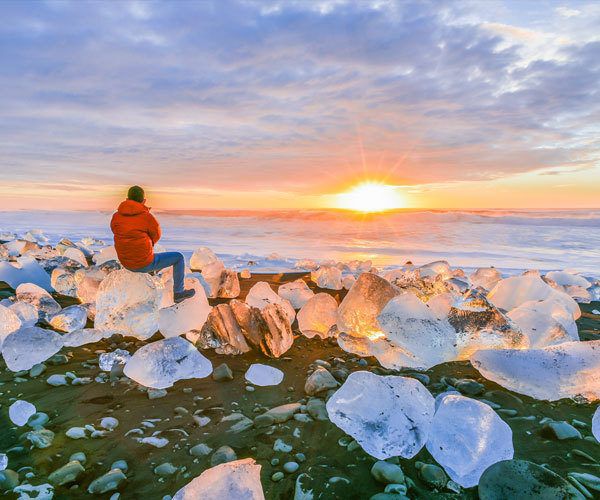
One of the many amazing things to experience on your visit to Iceland is almost 24-hours of daylight. No, this isn’t a joke. It will not get dark at night from May 21 until July 30, as the sun barely sets in summer. Pretty exciting, right? But that doesn’t mean that summers in Iceland are too hot. Typical temperatures in Iceland in the Summertime are 10–15°C (50-60°F), so you can actually enjoy every minute of your stay without having to worry about it being too hot. Additionally, the midnight sun phenomenon allows you to maximize your outdoor activities and have fun without the usual “daytime” restrictions.
Natural environment
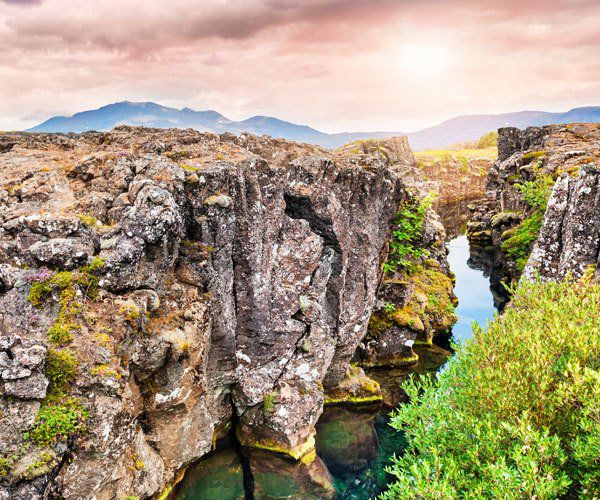
Do you love nature? With Iceland’s incredible natural environment, we’re confident that the more mundane tourist attractions that you might be used to, will not compare. In many parts of the world, the excessive influx of tourists and their interaction with the environment, actually leads to its deterioration, but this could not be further from the case in Iceland. Instead, in Iceland you will discover the true color of nature that will leave you tempted to visit each and every Summer. Start packing and get ready to delve into the wonders of Icelandic nature. Let the cool breeze brush by your face and breathe in the fresh air. Feel the sparkling fresh water and marvel at the magnificent sky. This is a place which takes you far away from the hustle and bustle of city life, and lets you breathe in peace and enjoy being outdoors.
Relax in luxury
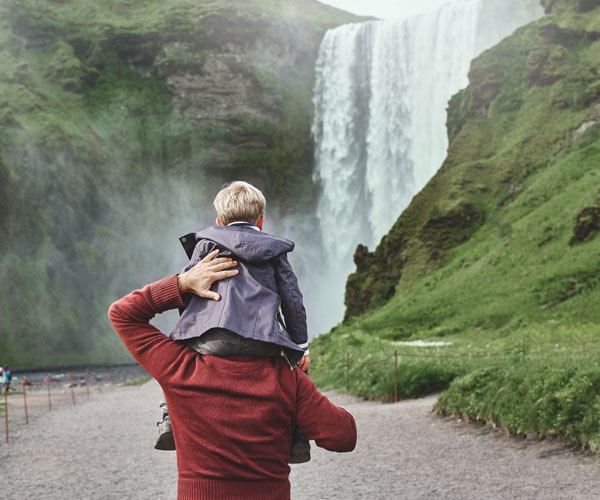
When visiting Iceland, you don’t have to forego luxury at the expense of amazing adventures and activities. You can enjoy the best of both worlds and definitely the best that Iceland has to offer. Since the opening of the first luxurious five-star hotel at the Blue Lagoon, Iceland has really made a name for itself in luxury travel. The best way to experience this remarkable country is in pure luxury. With first class accommodation and a choice of activities at your fingertips.
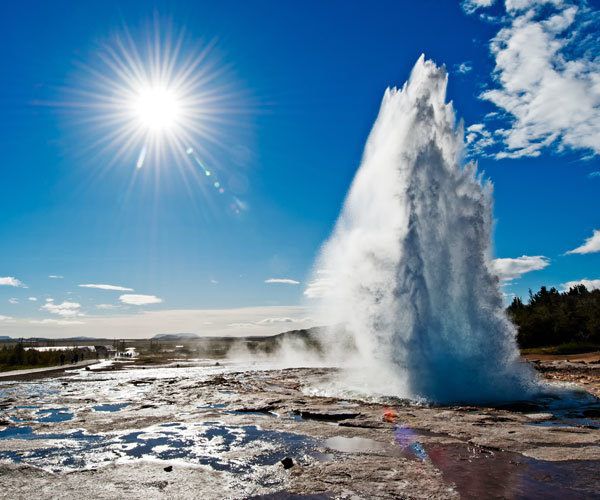
One of the best ways to relax in luxury is to soak in Iceland’s famous geothermal pools and natural hot springs. These heated pools are so therapeutic: all you need to do is just dip, relax and look at the sky. It makes you forget all your worries and refreshes your body and mind.
Adventure in style
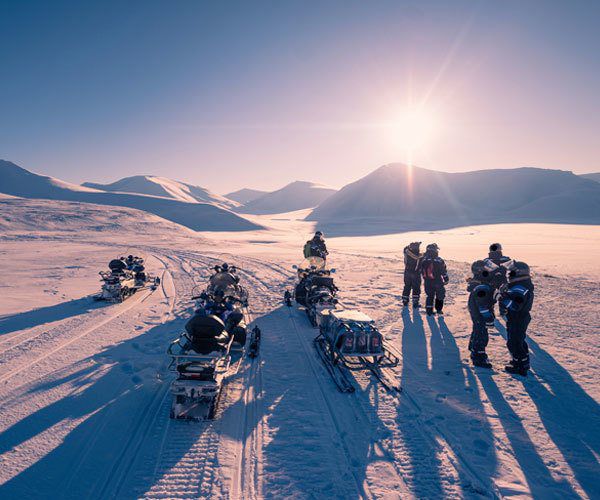
Get set for adventures through a unique landscape and indulge your inner explorer. When it comes to adventures and activities the options are endless! Whether you head up the infamous Eyjafjallajökull Glacier that erupted in 2010 for a snowmobiling adventure or go horseback riding on the Icelandic Horse that is known for its five gaits and ability to cross rough terrain you will leave with unforgettable memories.
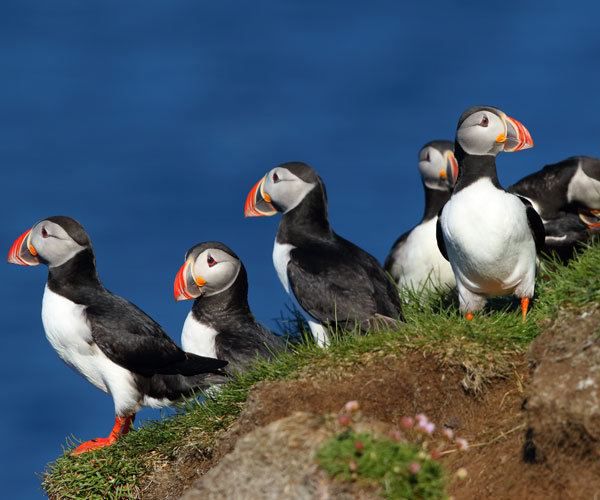
In the Summer you can really see the wildlife come to life, as Iceland gets many different bird species that migrate during that season. You will see many whales around the coast lines and you are likely to spot a puffin. The Atlantic puffin is somewhat considered the Icelandic mascot since we get estimated 8 to 10 million puffins here every Summer.
A variety of beautiful landscapes
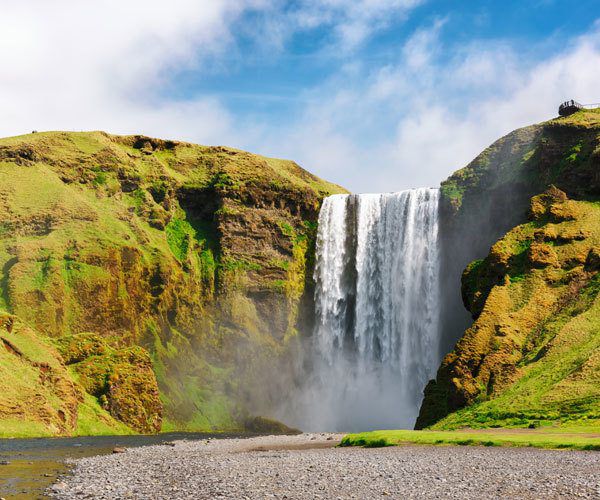
On your trip to Iceland, you can expect a variety of terrain, from mountains and green valleys to lakes and lagoons, to waterfalls and ice. Whether you wish to delve into nature or seek more thrilling adventures, make sure you also leave time to truly discover the many incredible places that you will visit so you can learn about our culture, literature and history.
The days are long enough; there are many unique adventures, places to relax and activities to choose from, so you may want to take advantage of visiting places you may not otherwise have considered or want to plan a holiday to look forward to later on this year or in 2021.
Unique experiences in Mauritius
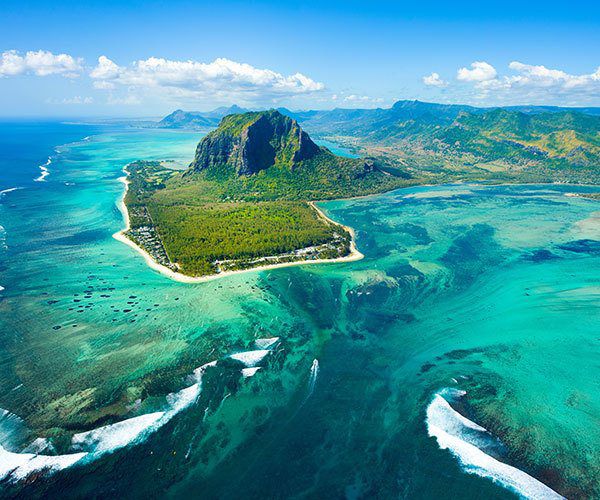
The outbreak of COVID-19 has changed life as we all know it. International travel is suspended until further notice and countries are heightening restrictions – one by one going into lock-down to try and tackle the virus. This is an unsettling time for communities across the world as we adapt to life within our own four walls, but we are confident that the future of travel is bright and once this has passed, people will travel with more gratitude than ever before. One thing we know is that while we all adapt to life at home, reading and inspiration is going to be vital in keeping us connected to the world. We want to start by highlighting one of the most stunning islands in the Indian Ocean – Mauritius! While the island of Mauritius might appear to be crystal blue waters and untouched white beaches – it’s so much more. From gorgeous mountain landscapes and water-based activities to rum tasting and golfing, the paradisaical island is the perfect luxury getaway, blogs Matt Gannan.
Ebony Forest Reserve Chamarel
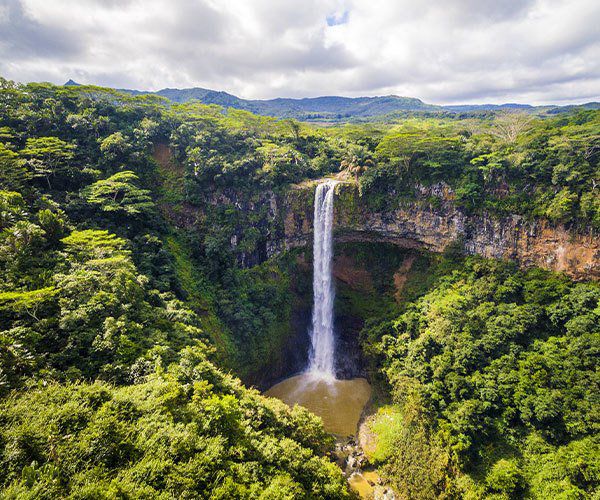
Ebony Forest is a rare find in Chamarel, especially if you fancy a break from the good looking beaches of Mauritius! With less than 2% native forest remaining in Mauritius, the Ebony Forest is a jewel for nature lovers and those wishing to get closer to the island’s native species of wildlife and plant life. Once home to the Dodo, you can discover some of the last remaining rare endemic birds, such as the Mauritian Pink Pigeon and Flycatcher. Hike the raised walkway and explore the beautiful endemic forest, seeing the Ebony trees and the on-going plant restoration work. Whether you want to pass your time in a beautiful landscape, search for silence or enjoy breath-taking views from Sublime Point, the Ebony Forest leaves much to be discovered.
Ile Aux Cerfs
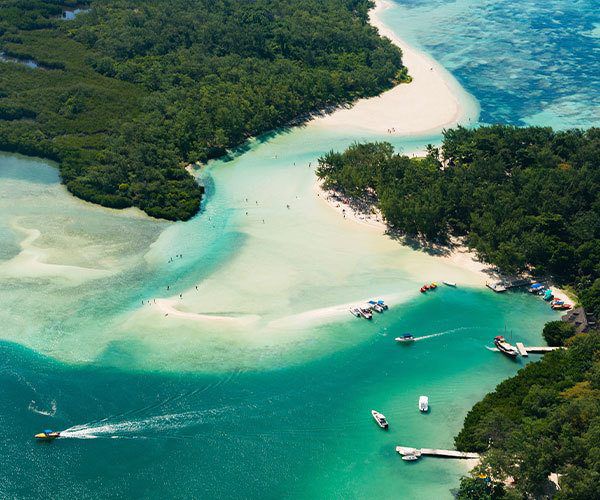
Situated on the East Coast of the island, Ile Aux Cerfs is an islet spread over 87 hectares of undeveloped land, surrounded by beautiful white sandy beaches and an abundance of warm crystal clear blue waters. It is also home to one of the most beautiful golf courses in the world, the prestigious Ile Aux Cerfs Golf Club, curated by legendary pro-golfer, Bernhard Langer. At Ile Aux Cerfs, you can spend unforgettable moments exploring the island and serene lagoons. The coral reef is beautiful and full of marine life, an ideal place for diving and to enjoy the underwater world of Mauritius! You can either hire a private speed boat or join a catamaran tour with a delicious BBQ lunch and live music on the beach.
Seven Coloured Earths
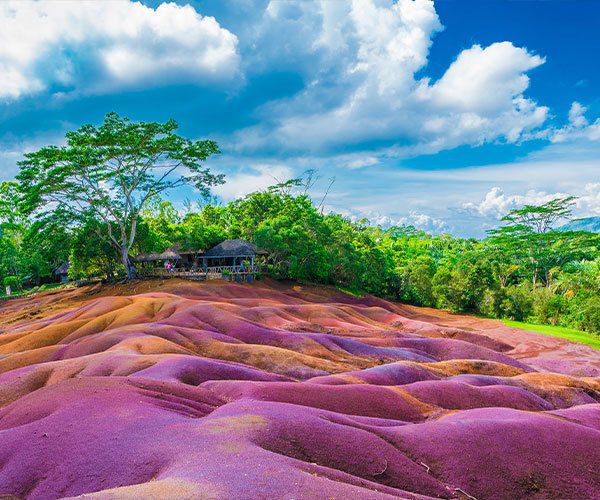
Closely situated to the Rum distillery, you can also find the Seven Coloured Earths of Chamarel. These are sand dunes made up of seven different natural colours! This phenomenon attracts visitors from all over the world as the sand ripples with colour. It is a magical experience and highlight whilst in Mauritius. The rains have carved interesting shapes into the hillside, creating this extraordinary effect which visitors have seen since the 1960’s. The best time to visit is just before sunrise or around sunset because of the artistic show of colour and light. Geologists are still fascinated by multi-coloured dunes made up of reds, purples and yellows. The colours never fade in spite of the rainfall. After a visit to the dunes, you can visit the nearby Chamarel Waterfall which is the highest waterfall in Mauritius and the most iconic on the island.
Rhumerie de Chamarel Rum Distillery

When you think about rum, it’s easy to imagine yourself sitting at a little beachfront bar in the Caribbean, sipping on a cocktail, which boasts bold and delicious flavours. But did you know the tiny island of Mauritius is also a holiday mecca for rum tasting! In the centre of a fertile valley, in the Southern part of the island lies Rhumerie de Chamarel. Located 300 meters above sea level, this local rum distillery is one of the few places that grow sugarcane and distill it in the same place. When you book the rum tour, you’ll get to sample eight different varieties from vanilla, coffee, tangerine, and coconut! You can book a table for a late lunch at the Rhumerie de Chamarel restaurant and enjoy the complimentary rum tour. Or, if you do not want to eat, you can buy a ticket and take the tour by itself.
Port Louis
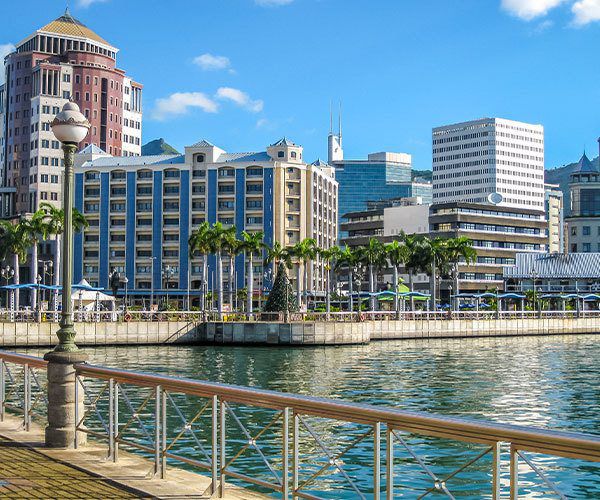
If you can tear yourself away from the tranquillity that Mauritius is famous for, head into the city capital of the island, Port Louis. It is a busy place full of life, colour and fascinating history. Developed by the French from the mid-18th century, Port Louis still maintains the French architecture and colonial buildings of the past. Soak up the hustle and bustle at the ‘Bazar Port Louis’ which translates to the Market of Port Louis. The first thing you notice on entering the market is the wonderful smells of exotic spices, tropical fruits and tasty street food, where a mix of ethnicity, African, Chinese, Indian and French, blend together for a very unique, Creole cuisine. Don’t miss the bite-sized samosas with smooth tamarind sauce, washed down with fresh pineapple and lime juice.
Dream travel adventures in Latin American
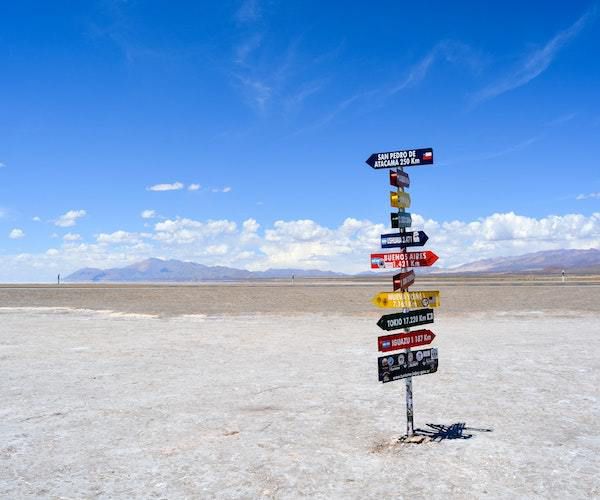
With travel on hold over this difficult period, many of us are getting our travel fix by seeking inspiration for special trips to plan for a post-crisis 2021. As lovers of big adventures, we understand that the next best thing to going on a trip is at least planning the next one! Remote lodges in Latin America get booked up quickly (as much as a year in advance) and these long-haul holidays always require a bit of extra forethought. Here at Humboldt, we have compiled a list of our favorite ‘big-adventures’ in Latin America that we think you could plan well in advance for 2021, blogs Simon Williams.
Exploring the ‘End of the World’
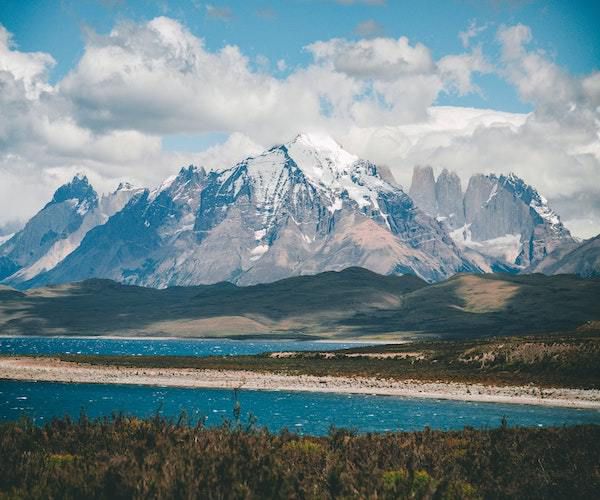
There is something so effortlessly wild and romantic about Patagonia’s icy slopes and windswept steppes. Whether you’re a wildlife buff seeking a glance of an elusive puma in the wild, or a keen hiker looking to enjoy some of the most scenic walking routes in the world, Patagonia’s dramatic landscapes and the homely charm of its people are completely unique. Highlights of Chile and Argentina’s far south are the steely grey peaks of the Torres del Paine National Park in Chile, the mighty Perito Moreno Glacier and Mount Fitz Roy in Argentina’s El Calafate and El Chaltén, and the icy fjords of Tierra del Fuego at the southern tip of the continent. Top end hotels here tend to be remote and relatively small, meaning that for Patagonia’s limited ‘season’ (October-April), the most in-demand properties like Awasi, Tierra and Explora can become fully booked up to a full year in advance of the travel dates.
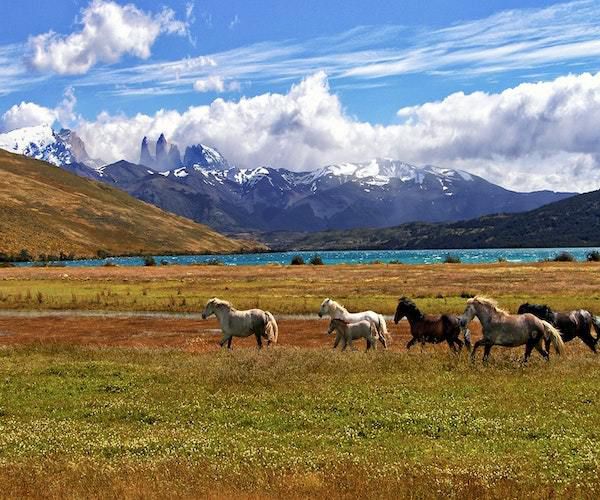
Our advice would be to begin your trip in Chile. Getting the 15-hour flight from the UK to Santiago over and done with first means that your return journey will be mercifully a little shorter. Spend a little time in the capital if you wish, but then head down to Punta Arenas or Puerto Natales in Chile’s southernmost Magallanes province. From here, spend three nights at the very least exploring the magical Torres del Paine National Park before heading back down to the port to board the Australis Cruise to Ushuaia, Argentina. This 4-night journey aboard one of two elegant sister-ships (Stella or Ventus Australis) takes you on a whimsical voyage through the glacier-topped peaks of Chile’s far south and through frozen fjords that carve up the landmass of Tierra del Fuego before reaching Ushuaia – the ‘City at the End of the World’. Spend a few nights here admiring views of the Beagle Channel before heading north to while away a few days hiking in El Calafate and El Chaltén – two of Argentina’s hotspots for breath-taking mountain hikes. Wrap up your adventure with a night or two in Buenos Aires enjoying good steak and wine before returning home.
Discovering the Mundo Maya
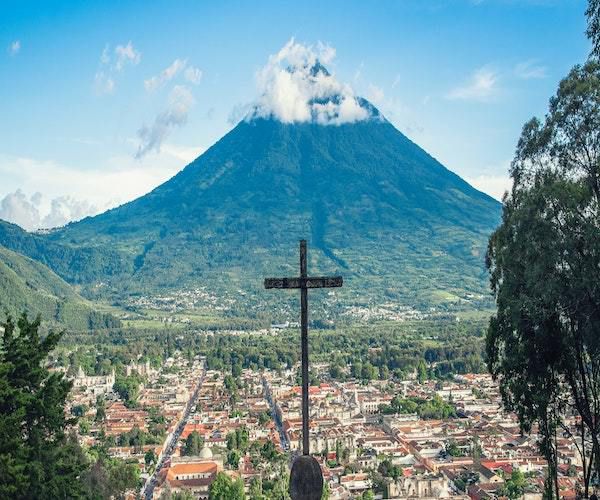
Verdant jungles, exotic flora and fauna, thriving indigenous cultures, and the mystifying crumbling pyramids of the ancient Maya and their predecessors: the countries that make up the ‘Mundo Maya’ (Mayan World) are utterly enchanting. Composed of Guatemala, Belize and the southern states of Mexico, the Mundo Maya spans some of Central America’s most eye-catching scenery, as well as iconic archaeological sites such as Chichen Itzá, Tikal and Caracol. Beyond the impressive Mesoamerican heritage of these fascinating countries, this region is home to alluring Spanish colonial Baroque architecture in the well-preserved 16th and 17th century towns of Mexico’s Mérida and Guatemala’s stunning Antigua. Experience the vibrancy of Mexican cuisine in between historical tours in the Yucatán, luxuriate on a sun bed with breath-taking volcano views at Guatemala’s Lake Atitlán, and find time to snorkel the world’s second largest barrier reef in between jungle hikes to lost Maya cities in buzzy Belize.
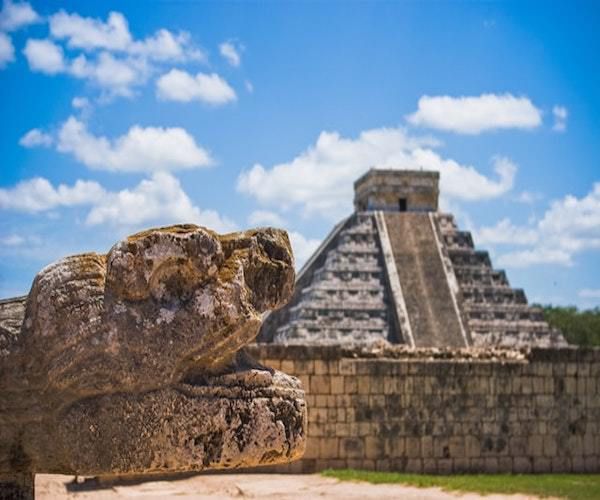
Begin your journey in Mexico – direct flights from the UK to Cancún depart regularly – and set off on a journey around the region’s many highlights. We recommend making the extra effort to get up very early and enjoy a private tour of Chichen Itzá before the park opens to the public, which is something we can arrange. Explore subterranean cenote sinkholes where the ancient Maya believed one could enter the underworld and saunter through the cobblestoned colonial streets of Valladolid, Mérida and Izamal. Fly directly from Cancún to Guatemala City and make time for Antigua, Lake Atitlán and the majestic ruins of Tikal, one of the largest Maya cities ever discovered, even though as much as 80% of the settlement may still be buried by the surrounding jungles. Finally, hop over the border to Belize’s diverse Cayo District where you can get your fix of adventure tubing, hiking, horseback riding, and caving; before finishing your trip on the powdery white sand beaches of the azure Belizean Caribbean Cayes.
Journeying to the Antarctic
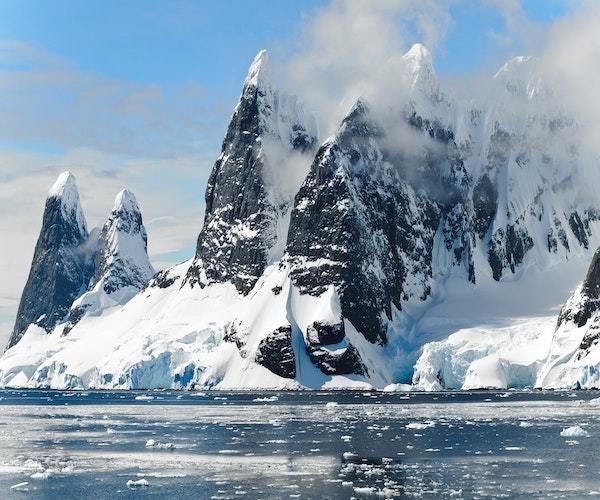
Wild, unspoiled and uninhabited, save for a few sparse scientific research facilities, a journey to the ‘White Continent’ of Antarctica features on many a travel bucket list. Earth’s last great wilderness, a luxury voyage here will allow you a memorable glance at some of the world’s most dramatic landscapes. Icefields as large as entire cities, rugged polar mountain ranges and impossibly large penguin colonies are just a few of the sights you can expect to tick off here. Wildlife lovers will be enthralled by sightings of various species of whale (orca, humpback, blue, southern right – to name just a few), leopard seals, penguins and giant polar seabirds. With polar bookings on the best cruises taking place on average 18-months to 2-years in advance, there’s never a better time than right now to secure your spot on the trip of a lifetime.
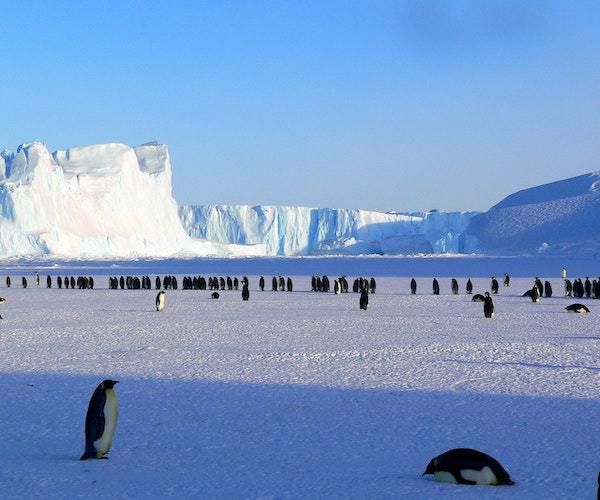
While there is a plethora of excellent luxury cruise options for maximising your experience of Antarctica available, your travel specialist can guide you towards the ones that are right for you. For those seeking the top end of traditional luxury cruising, you cannot beat Silversea, whose stunning all-suite vessels include butler service for every passenger and a range of excellent dining options. Those who are more intrepid explorer types will revel in the variety of more unusual activities on offer from small-ship cruise company, Aurora Expeditions. A voyage on the brand-new Greg Mortimer and Sylvia Earle allows travellers the once-in-a-lifetime opportunity to ski, kayak, camp, snowshoe and even snorkel/dive in the the polar regions. Passengers unsure about the prospect of the 2-day crossing of the infamously bumpy Drake Passage should opt for a luxury fly-cruise, skipping the crossing entirely. There is a perfect fit for every requirement, and it is never too soon to book.
Grand journey through the Andes
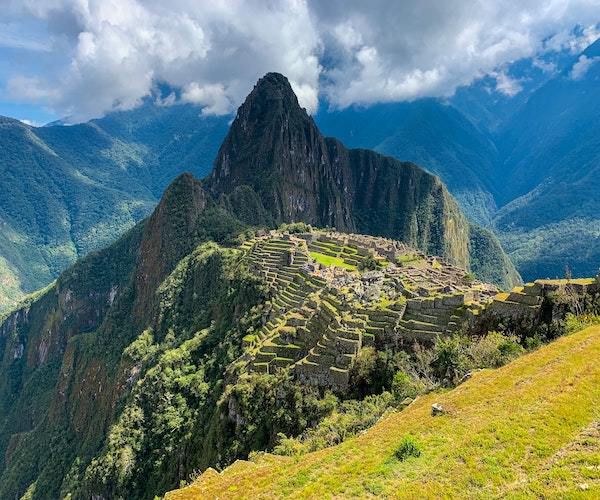
Few places in Latin America offer such a winning combination of immersive cultural experiences, impressive archaeological remains and sweeping mountain landscapes as the northern end of the Andes mountain range. From the world-famous Machu Picchu and the extra-terrestrial-looking Salt Flats of Uyuni to the cobalt depths of Lake Titicaca and the gasping fumaroles of the Atacama Desert; combining an exploration of Peru, Bolivia and northern Chile in the perfect way to experience the full magic of the Andes. This colourful region has something for everyone: quaint Spanish colonial towns, stunning mountain views, luxury train rides, excellent multi-day hiking, vast empty landscapes, mysterious Inca and pre-Inca ruins, and much, much more. Whether landscape photography, history, culture or gastronomy are your ‘thing’, you will find whatever it is you are looking for in abundance here.
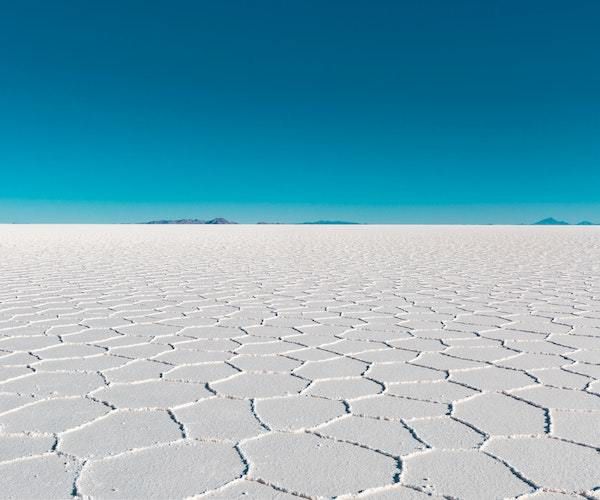
We recommend flying into Cusco and starting off your journey in the Sacred Valley of the Incas. The lower elevation allows for acclimatisation to the soaring heights and a few days here exploring ruins, hiking and interacting with ultra-traditional communities is time well-spent. From here, treat yourself to completing the Inca Trail OR a luxury train journey to the mysterious Machu Picchu, perched high in the mountains where the Andes meet the Amazon. Spend a couple of nights in the imperial city of Cusco before traversing the altiplano to the south to reach Lake Titicaca, the highest commercially navigable lake in the world and the birthplace of Andean civilisation. Cross the border into neighbouring Bolivia and experience the muddled dynamism of the capital city La Paz before heading south to Uyuni for a comprehensive tour visiting the salt lakes, volcanoes, and pastel-coloured mountain lagoons full of flamingos. Travel on across Bolivia’s southwestern border into the wild copper expanse of Chile’s Atacama Desert and finish your trip in a luxury spa hotel overlooking the hazy violet slopes of Mt. Licancabur.
Ultimate wildlife tour of Brazil
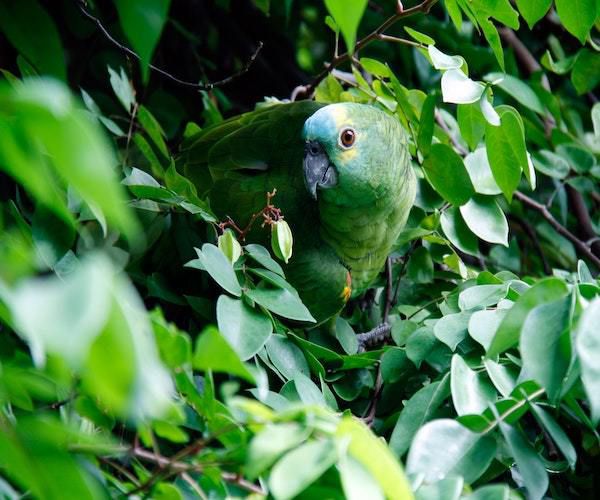
Brazil’s biodiversity in mind-blowing. This country, as large as almost the entirety of Europe, is home to many of South America’s emblematic wildlife species and the best country in the world to spot the elusive jaguar in the wild. Notorious shy, these majestic cats can be observed with relative ease at the right lodge, at the right time of year, in the Brazilian Pantanal wetlands. Beyond this, visitors can hope to see giant anteaters, caiman, capybaras and a huge diversity of birdlife. And then there’s the Amazon: the lungs of the earth; overflowing with water species, primates, insects and birds. Travellers who venture off the beaten tourist track may observe maned wolves in the Brazilian cerrado savannahs, and rare golden lion tamarins in the Atlantic rainforest. For those who are serious about their wildlife, there really is nowhere better.
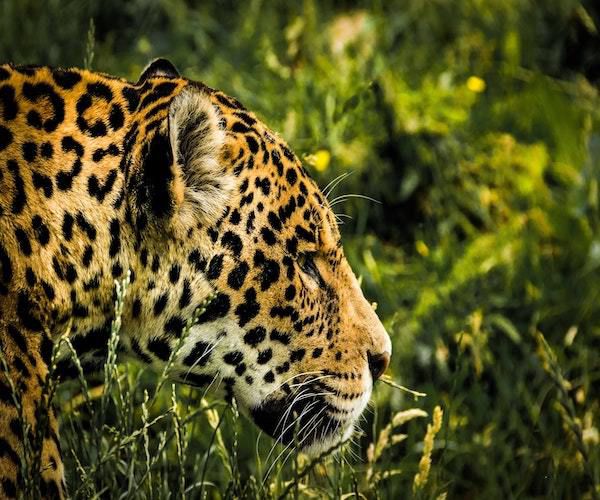
To tick off all of Brazil’s major wildlife highlights, we recommend dedicating at least three weeks to your trip. Brazil is a gargantuan country and the necessary internal travel can be exhausting if squashed into too short a holiday. We highly recommend combining a short stay in the Atlantic rainforest (to visit a dedicated golden lion tamarin reserve) with visits to the northern and southern Pantanal and Amazon. The northern Amazon offers the bucket list experience of seeing the famed ‘Meeting of the Waters’ where the Rio Negro and the Rio Solimões merge to form the Amazon proper, while the southern Amazon provides opportunities to spot more timid animals who prefer the narrower river channels of the Amazonian tributaries, like the giant river otter. A stay in the northern and southern Pantanal offers the maximum chances of ticking off all of the key species (including the jaguar). To top it all off, we strongly suggest taking a few days to explore the dusty plains of the cerrado. Home to hundreds of threatened and endemic bird, reptile and mammal species, this is also the best place to catch a glance of the maned wolf.
However strange this travel-less period might be to us all, there is a light at the end of the tunnel. So why not use this time to plan ahead? Latin America has something for everyone and lends itself wonderfully to that once-in-a-lifetime, dream adventure; something that no doubt we will all need in 2021.
Egypt shuts mosques and churches over coronavirus fears
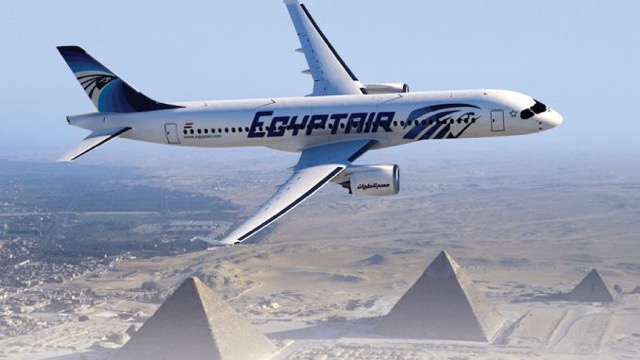
Egypt on Saturday ordered mosques and churches to shut their doors to worshippers in an effort to curb the spread of the coronavirus, after calls for the government to follow steps taken by neighboring countries.
The North African country reported nine new coronavirus cases and two fatalities on Saturday, the health ministry said in a statement, bringing the totals to 294 confirmed infections and 10 deaths.
Many on social media had criticized the government for not canceling weekly Friday prayers and masses at which worshippers crowd into mosques and churches.
The Ministry of Islamic Endowments said it would shut all mosques for two weeks “for the necessity of preserving souls”, but will allow them to broadcast prayer calls through loudspeakers.
In another statement, the ministry stressed that mosques will not open during the closure even for funeral prayers, adding such sermons should be done in open areas.
Egypt has more than 100,000 mosques.
Al-Azhar, Egypt’s top Sunni Muslim authority, said it would shut its historic mosque in old Cairo starting from Saturday “for the safety of worshippers, and until the end of the coronavirus epidemic”.
On March 15, Al-Azhar’s Council of Senior Scholars said that governments had the right to shut mosques “to protect people from the coronavirus”.
Egypt’s Coptic Orthodox Church on Saturday ordered all its churches to shut their doors and suspend masses for two weeks over coronavirus fears, it said in a statement.
The church also banned visits to monasteries and closed condolences halls attached to churches.
Each parish will name only one church for funeral prayers and the sermons will be restricted to the family of the deceased.
Christians represent around 10% of Egypt’s population of 100 million, according to unofficial estimates. The vast majority of the country’s Christians are orthodox.
The Coptic Catholic Church followed the same approach and ordered its followers on Saturday to pray at home until further notice. Its churches will open their doors for funeral prayers only, which will be restricted to family members.
Egypt, which has seen its tourism sector badly affected by the epidemic, will close all museums and archaeological sites starting March 23 until the end of the month for sanitization, the tourism ministry said in a statement on Saturday.
Tourism revenue rose to a record-high $12.57 billion in the financial year that ended in July 2019.
The most populous Arab country said on Thursday it would shut all cafes, shopping malls, sports clubs, and nightclubs from 7 p.m. until 6 a.m. local time every night until March 31. It exempted supermarkets, pharmacies, bakeries, and neighborhood corner stores.
Egypt also shut schools and universities and moved to cut the number of public sector employees reporting to work in an effort to discourage crowding and slow the spread of the disease.
Flights were grounded on Thursday until the end of March, with the exception of outward-bound flights needed by foreign tourists.
The government said that during the flight ban and school shutdown, hotels and all educational facilities would be sanitized. Reuters.com
Taiwan suspends the transit of airline passengers
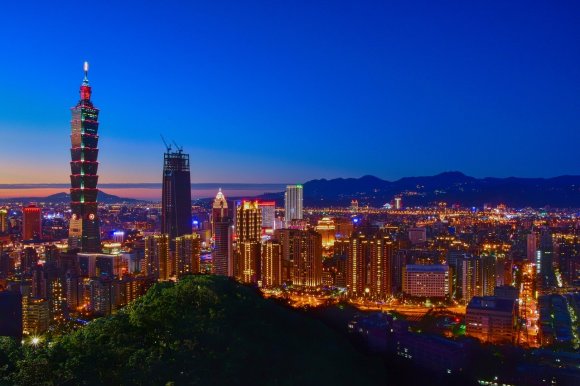
Taiwan further tightened travel controls on Sunday to help stop the spread of the coronavirus, suspending the transit of airline passengers through Taiwan from March 24 until April 7, as it announced 16 new cases bringing the total to 169.
While Taiwan had in the early stages of the outbreak been successful at keeping the number of cases relatively low thanks to a good screening and contact tracing system, numbers have spiked due to an influx of infected people from abroad.
Taiwan has already stopped all foreigners apart from residence permit holders from coming to the island and is quarantining for 14 days everyone arriving on the island.
From midnight on Tuesday, airline passengers will no longer be allowed to transit via Taiwan, until April 7.
The move is to “reduce the cross-border movement of people and lower the risk of disease transmission”, the government said in a statement.
The ban will mostly affect Taiwan’s two main carriers, China Airlines and Eva Airways, which have in recent years marketed Taipei as a convenient and affordable transit airport, competing with Hong Kong and Singapore.
Both airlines have massively cut back their flights due to the impact of the virus, but are still operating and have been busy bringing back Taiwanese from the worst affected parts of the world like Europe.
Taiwan has strongly advised its citizens against all overseas travel.
Explore the very high peaks in Zermatt
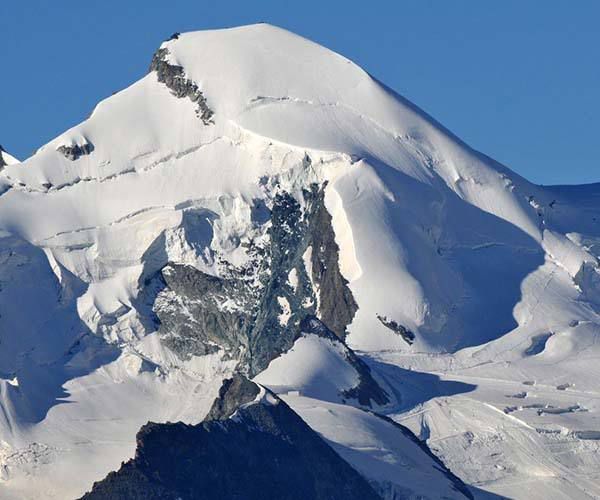
As things stand at the moment the travel industry has pretty much ground to a halt. Trying times, indeed. However the only constant thing is change and there will come a day when things return to normal, whatever normal is! In the meantime I guess we can all dream of that day when we can slate our thirst for wanderlust once again. Here’s something you might like to consider when that day arrives. Zermatt is almost completely surrounded by the high mountains of the Pennine Alps and it may surprise you to read that there are in total 38 peaks all of which are over 4,000m in the region.
This includes the Matterhorn, Monte Rosa and its tallest peak, the Dufourspitze, which happens to be Switzerland’s highest peak at 4,634 metres. A true paradise for alpinists and anyone who feels at home in a mountain landscape. If you fancy a climb, pack your crampons and your ice picks and make your way to Zermatt. If the very thought of clinging to vertiginous heights gives you the shivers just bring your camera and snap away at arguably the most spectacular and magnificent scenery in the whole of the Alps, blogs Dan Frith.
Allalinhorn (4,027m)
The Allalinhorn is one of the easiest 4,000-metre peaks in the Alps to climb, and also one of the most popular. From the summit, climbers see almost the entire sweep of the Western Alps. The first ascent was in 1856. In 1828, Heinrich Michaelis and a guide crossed the Allalin Pass and thereby opened up the route to the south-west ridge. The first ascent of the Allalinhorn via the same ridge took place 28 years later. On 28 August 1856, the parish priest Johann Josef Imseng and his manservant Franz Josef Andenmatten led the Englishman Edward Levi Ames to the summit.
Today’s normal route, the north-west ridge, was first used on 1 August 1860. The Bernese high school teacher and historian Heinrich Dübi ascended the summit via the difficult north-east ridge on 27 July 1882 with the guides Alphons and Peter Supersaxo, and then descended via the Hohlaubgrat ridge. This represented the first crossing of both ridges.
The first winter ascent of the Allalin was by the Swiss mountaineer R. Bracken, climbing solo, in 1907. The first ascent on skis was on 17 April of the same year by A. Hurter und Max Stahel, both from Zürich, together with the local mountaineers Othmar and Oskar Supersaxo.
The Metro Alpin carries mountaineers from Saas-Fee up towards the peaks, to an altitude of nearly 3,500 m. The summit of the mountain is a climb of about two hours from the top station of the funicular. The summit is located on the Mischabel ridge between the Saas and Matter valleys. The Allalinhorn is a white dome between the mountaineering centres of Saas-Fee and Zermatt. A mountain guide is necessary and acclimatisation is recommended. It’s a glacier trek with a little rock and scree but is considered an easy climb.
The mountain guide Camillo Supersaxo from Saas Fee has climbed the Allalinhorn more than 1,000 times. To celebrate the anniversary, Bishop Eldingen said mass on the summit.
The Breithorn (4,164m)
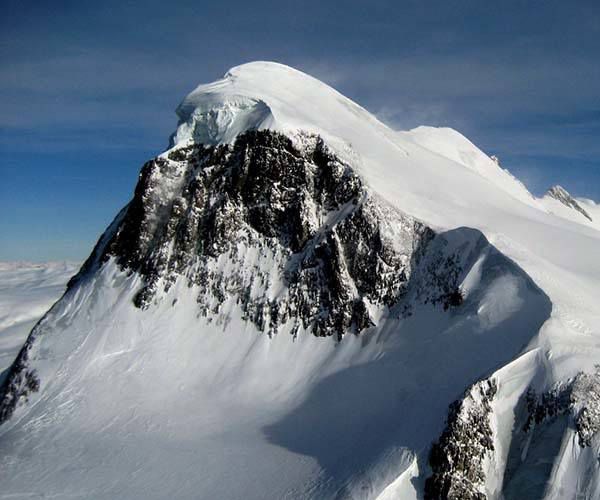
Breithorn is a heavily glaciated mountain crest with several peaks. Many budding mountaineers choose this for their first 4,000-metre summit. The first ascent was in 1813 by, Henry Maynard, Joseph-Marie Couttet, Jean-Baptiste Erin, Jean-Jacques Erin, Jean Gras. Considered the easiest 4,000-metre peak in the Alps. Breithorn is accessible in roughly 2 hours from the Matterhorn Glacier Paradise cable car station. A mountain guide is necessary and this is a pure glacier trek.
In July 1995, the Zermatt mountain guide Ulrich Inderbinen climbed the Breithorn and the Allalin more than a dozen times. He was 95 years old at the time. After a harmless fall on the return from the Breithorn, Inderbinen ended his 70-year career as a mountain guide in the summer of 1995.
“Breit” means “broad”: a fitting description for this mountain crest with multiple peaks, which extends for more than two kilometres. The western summit is the highest, but is also considered the easiest to climb. The middle and east summit and the Breithorn Twins form a chain towards the east. The most easterly summit, which marks the end of the Breithorn, is the Schwarzfluh (Roccia Nera). The border between Valais and the Autonomous Region of the Aosta Valley runs over the Breithorn. The peak also forms part of the main ridge of the Alps, which is both the regional watershed and meteorological divide.
Dufourspitze (4,634m)
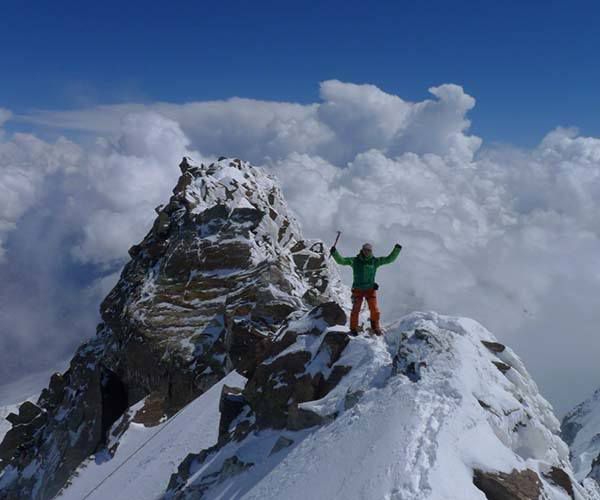
The first ascent took place on 1 August 1855 by a rope team led by Charles Hudson. Hudson was subsequently a member of the team that completed the first ascent of the Matterhorn, in 1865 and sadly, one of the four climbers who fell to their deaths during the descent. On the Dufourspitze, Hudson was accompanied by John Birkbeck, Edward J.W. Stephenson and the brothers Christopher and James G. Smyth.
The Dufour peak is the highest summit in Switzerland and one of the ten main summits of the Monte Rosa massif. Its rival is the Dom, the highest mountain located entirely within Swiss territory. The 150th anniversary of the first ascent was celebrated in 2005: Federal Councillor Joseph Deiss, together with Zermatt mountain guides who were descendants of the first conquerors of the mountain, climbed from the old Monte Rosa cabin to the peak in a seven-hour tour. There he met up with the Italian minister of agriculture, Giovanni Alemanno.
A mountain guide is necessary and depending on fitness levels the Dufourspitze is suitable for single or multiple ascents in the Monte Rosa massif. The climb is considered to be medium difficulty. As with all these climbs, acclimatisation would be strongly recommended.
One of the great achievements, but by no means the only one, of General Guillaume-Henri Dufour was his Dufour map. Made between 1845 and 1865, it won worldwide recognition and the highest honours at the Paris world fair in 1855. Dufour achieved eminence during the Sonderbund civil war of 1847 – the last war fought on Swiss soil, which lasted only 27 days – by his adherence to humanitarian principles in the conduct of warfare. Dufour was a co-founder of the International Committee of the Red Cross.
Matterhorn (4,478m)
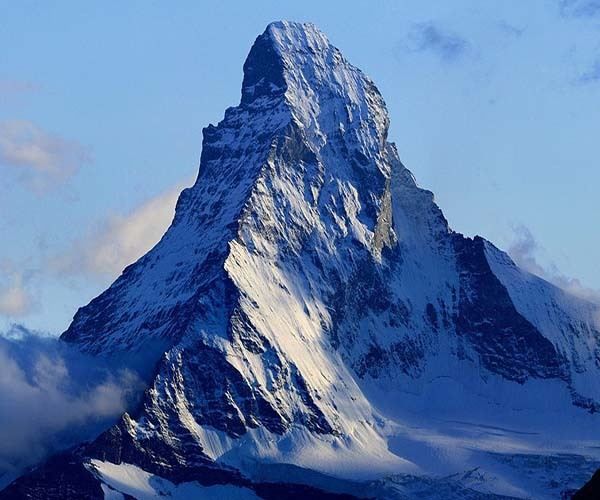
The Matterhorn, is Zermatts’ calling card and the king of mountains. Arguably the most photographed mountain in the world. The Matterhorn has a magic attraction, both for day-trippers who love the view and for Alpinists who love a challenge and dream of climbing the peak of the Matterhorn at least once in their lives. The first ascent was in 1865 and at that time the Matterhorn was the only remaining famous 4,000-metre peak to be conquered. The leader of the first ascent was Edward Whymper who did more than most to put Zermatt on the map.
Be warned, the Matterhorn is not to be taken lightly. A mountain guide is a must and the climb and return to earth is strictly for sure footed climbers with a good head for heights. The ascent demands stamina and a very good level of fitness. Thanks to its shape and its free-standing position, the Matterhorn is considered to be the epitome of a mountain. There is no better-known mountain in the world whose natural shape is so close to a pyramid. 100 million years ago, enormous forces brought Africa closer to Europe. 50 million years later, as the rock masses folded and deformed, the Matterhorn was born from the rock thrusting upwards.
From 1857 onwards, several unsuccessful attempts were made to climb the Matterhorn, mostly from the Italian side. When Edward Whymper arrived in Valtournenche in July 1865, this was already his sixth summer season in the area. During the previous five summers, Whymper had failed to climb the mountain regarded as the King of the Alps and considered to be unclimbable. Each unsuccessful climb boosted the mountain’s aura of invincibility, so that even experienced local mountain guides often turned down generous offers from foreign expedition leaders. But the Briton did not believe in mountain demons, and his project was based on calm reflection. He had studied the books of Horace Bénédict de Saussure and come to the conclusion that the mountain could be conquered from the Swiss north-east ridge rather than the Italian south-west. It was not Breuil that would be his starting point, but Zermatt!
On 14 July 1865, Whymper’s 7-man team completed the first ascent of the Matterhorn. The group climbed onto the shoulder over the Hörnligrat ridge and, further up, in the area of today’s fixed cables, diverted onto the north face. Edward Whymper was the first to reach the summit, followed by the mountain guide Michel Croz, the Reverend Charles Hudson, Lord Francis Douglas, Douglas Robert Hadow and the Zermatt mountain guides Peter Taugwalder senior and Peter Taugwalder junior. As the climbers were descending the four leading men in the rope group (Croz, Hadow, Hudson and Douglas) fell to their deaths on the north face. Three of the dead were recovered several days later on the Matterhorn Glacier, but the remains of Lord Francis Douglas were never found.
Every year, between 300 and 400 people attempt to climb the peak with a guide; of them, about 20 fail to reach the summit. Roughly 3,500 people tackle the Matterhorn without a guide each year; some 65 per cent turn back en route, usually because of lack of fitness or an insufficient head for heights. Poor weather also often plays a role: conditions change very quickly. Air Zermatt, founded in 1968, is frequently called to make rescues. On a day with ideal conditions, up to 300 mountaineers attempt the climb.
Weisshorn (4,505m)
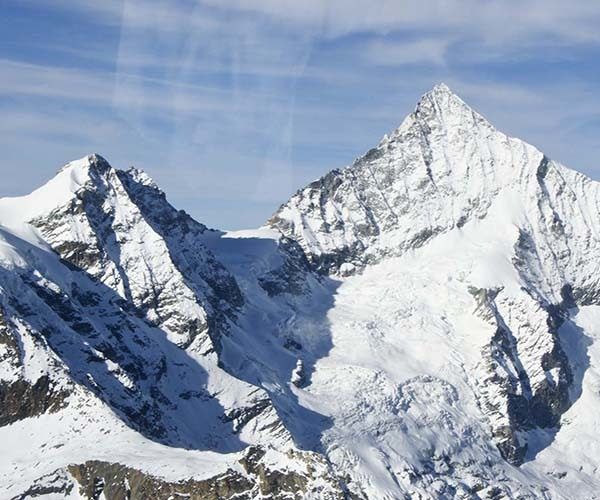
The Weisshorn is the secret star among the 4,000-metre peaks around Zermatt. It boasts a pleasing, symmetrical triangular shape; for mountaineers, it offers a thrilling challenge. The first ascent was in 1861 and was conquered by John Tyndall, Johann Joseph Benet, Ulrich Wenger. A mountain guide is necessary, it’s an arduous 2 dat trip and is considered a difficult climb.
The Weisshorn above Randa is considered one of the most important 4,000-metre peaks of the Alps. Although it cannot compete with the Matterhorn in terms of appearance, the Weisshorn is still relatively free-standing, and with its three ridges and faces forms a regular pyramid that is actually higher than the Matterhorn. In 2011, the people of Randa celebrated the 150th anniversary of the first ascent, along with numerous mountain guides from the whole region.
2011 was a special triple-anniversary year for Luzius Kuster, the warden of the Weisshorn hut. The Weisshorn was first climbed 150 years earlier; the Weisshorn hut had been open 111 years; and Luzius celebrated his 45th year as warden of the refuge. He first came to the cabin as a 20-year-old in 1966, staying for the summer “out of love for nature”, and remained – not least due to the generosity of his employer, who allowed him to be absent during the summer for several decades.
Great Red Sea scuba diving destinations in Egypt
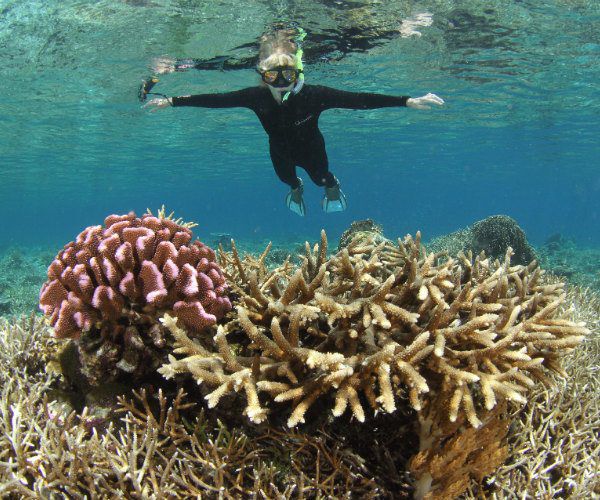
Marsa Alam, Egypt’s Red Sea features over 400 species of coral and reefs, in addition to hundreds of magnificent fish species, sea animals, anemones, urchins, and more. Here we are going to highlight the ultimate beauty of its diving spots.
Marsa Alam is perfectly located on the western shore of the Red Sea, Egypt. Recently, it is chosen as one of the best diving spots in the world, from which you can completely explore the southern Red Sea’s wonders. In addition to that, Marsa Alam offers several world-class resorts that line the coastlines charming beaches, and what makes it more interesting, it is only about 4 hours’ drive away from Hurghada.
Marsa Allam makes a perfect diving spot for those who are looking for new challenging dives and unique wildlife experiences. Its sites offer a real opportunity to dive with unique species of sea turtles, cute dolphins, dugongs, and manta rays.
Actually, the diving season in Marsa Alam is year-round, yet the perfect time to dive in Marsa Alam is from May through August. We recommend visiting Marsa Alam in autumn when it is quieter and the water temperature is still balmy. You should expect water visibility up to 100 feet (30 m), but make sure to ask an expert about the perfect local dive sites and sea conditions before diving unguided. Pack a 3 mm or 5 mm wetsuit; depending on your cold tolerance, and always carry a dive knife, torch, and DSMB, blogs Sherif Khalil.
Abu Dabab Beach
- Diving depth: Up to 25 meters
- Location: 30 km north of Marsa Alam.
- Water visibility: 5-20 meters; better in the deeper areas
- Suitable for: All diving levels.
Abu Dabab is considered one of the most popular beaches in Marsa Alam; it features many turtles and dugongs. It is also a dive site suitable to all skill levels, although it doesn’t contain any coral reefs and not infrequent poor visibility. Professional divers count it as the best place to get close to sea turtles and the dugong.
Fortunately, the bay has recently been closed to boats making both snorkeling and scuba diving easier and more relaxing. You can divide among a group of the imperiled shark species – one of the world’s rarest sharks. It has bizarre but beautiful looks as if a stingray had been crossed with a real shark. Nothing to worry about, it’s not aggressive at all. However never touch them as a flip of its tail could dislodge your mask.
Elphinstone Reef (Sha’ab Abu Hamra)
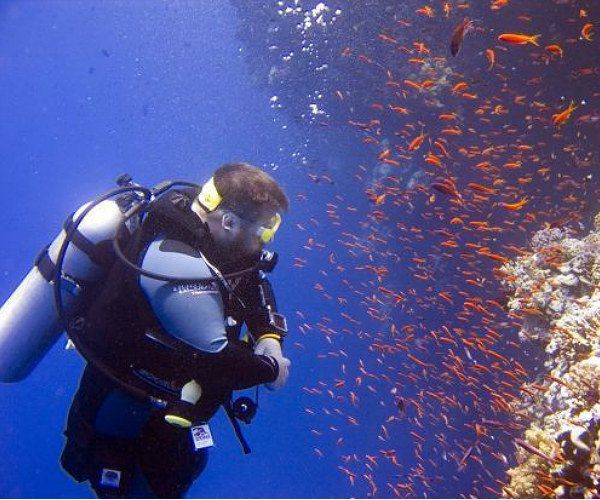
- Diving depth: From 20 up to 70 meters (60 – 200ft)
- Location: 50km northeast of Marsa Alam, and 10km from the shore.
- Water visibility: 20-30 meters
- Suitable for: Experienced divers only
Amazing reef line lies in the open ocean, a little over seven miles (12 km) from the Marsa Abu Dabbab coastline. It takes around 20 minutes to get there via Zodiac from Marsa Alam. It is considered as one of the top reef plateaux in The Red Sea; it’s about 300 meters long, 30 meters wide, and 40 meters deep. Yet, at its edges, there are near-vertical cliff walls. The west drop off is a little less vertical than the east and sandier with some overhangs and small caves.
Elphinstone makes a perfect option if you are looking for shark encounters, particularly the large and usually solitary oceanic whitetip. Many divers report up to four sitings on a single dive! Please be cautious of these magnificent animals and never feed them. You can see sharks year round, but they are most numerous from October to December.
The reef there attracts an enormous variety of sea life including jacks, tuna, blue lunar fusiliers, black snapper, and lone giant barracuda. So, it’s better to watch the reef from a distance.
Sataya Reef
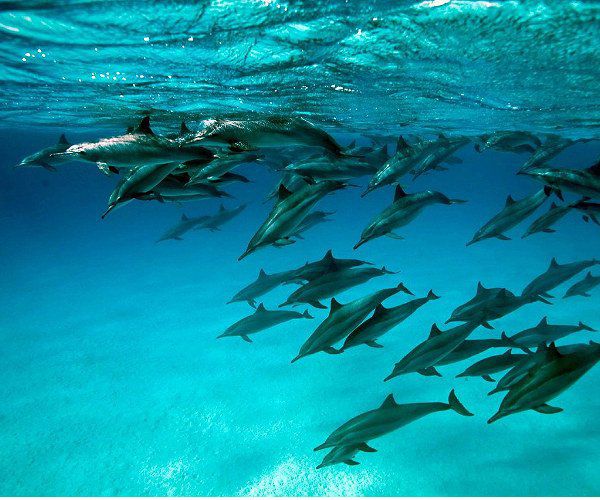
It is still not yet as well-known as other diving spots in Marsa Alam; few of the tour operators currently visit it. Yet, this gave it an additional privilege that makes of it a special reef to visit. You probably stand a better chance of swimming close to dolphins as contrary to what you might believe, these friendly but easily stressed animals. So, try to avoid areas where there are too many people and boats.
Samadai Reef (Dolphin House)
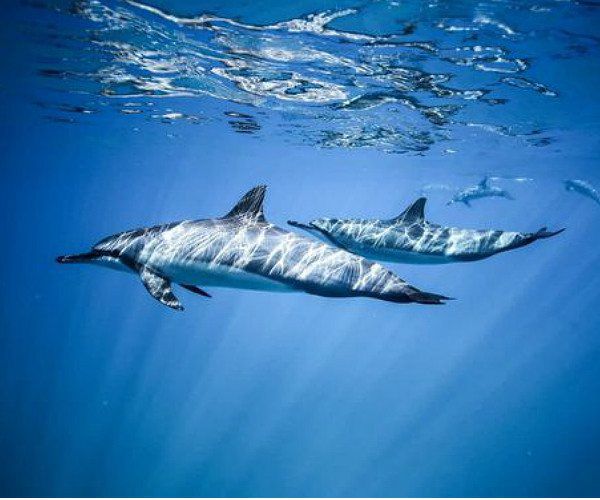
- Diving depth: from 10 up to 15 meters (32 – 49 ft)
- Location: approx. 20km SE of Marsa Alam
- Suitable For: All diving levels
It is one of the most popular reefs in Marsa Alam; you can consider it one of the world’s most important dolphin habitats. It’s home for a large family of around sixty spinner dolphins. They are nocturnal animals and return every morning to the shallow waters of the reef to rest. It’s better not to feed or play with the dolphins as it is not natural for them and may cause distress.
Samadai Reef is crescent-shaped with a small lagoon of sand and sea-grass within, which is rich in marine life including the usually elusive sea horses. You can also explore some underwater caves and at least twelve coral towers! Remember, you should only explore the caves with an experienced guide.
Hamada Wreck (Abu Gosoon Shipwreck)
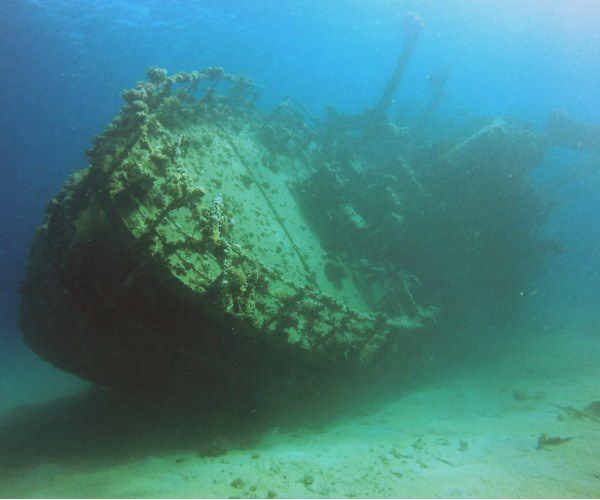
- Diving depth: from 0m up to 18m
- Location: 68km SSE of Marsa Alam
- Water visibility: 15 to 30m
- Suitable for: all diving levels
The Hamada sank off a secluded shoreline south of Wadi El Gamal National Park in 1993. The wreck is unique as it’s suitable for snorkelers, as well as experienced and novice divers.
It is home to young corals, while the wreck itself is home to a number of species, including hump head wrasse, lionfish, butterflyfish, and moray eels. It is fringed with some of the most beautifully colorful coral reefs in the world due to its sandy white beaches. It’s an enchanting site for diving that is perfect for experience the delicate harmony and balance between man and nature.
Air Tahiti Nui Boeing 787 breaks passenger flight records

As the United States shuts down its borders to European flights, airlines are getting creative. Air Tahiti Nui is one such airline hoping to keep its international flights going without entering the US. As such, the carrier has scheduled the world’s longest (and technically domestic) flight between France and French Polynesia.
The French airline flew 130 passengers on the new longest distance passenger flight ever. The flight from Tahiti to Paris usually stops in Los Angeles but was prevented from doing so by a COVID-19 (coronavirus) policy that stops incoming flights to the U.S.
The March 14 flight was in the eye of a perfect storm. President Trump announced the U.S. travel restrictions that day, and the flight had just 130 passengers on a Boeing 787 built to hold at least 240 and as many as 330. With the low number of passengers, the plane could stretch one tank of fuel for nearly 10,000 miles from Paris direct to Tahiti. The flight took almost 16 hours and immediately took both length and distance records for passenger flights. The great circle distance of the flight was about 9,765 miles or 15,715 kilometers.

The Tahiti to Paris flight was also at risk of running out of fuel. But if it were really cutting it close, the pilots and airline wouldn’t have risked it. Passenger planes can safely land and brake to stopping at any weight that’s below their allowed landing weight. It makes sense: a lighter-weight craft makes a lighter, easier landing that doesn’t stress the structure of the aircraft, and the brakes and flaps are also less stressed than they are by a heavier plane.
The Tahiti flight also likely had some wiggle room in the fact that planes with layovers are fueling for that shorter layover distance, not the full length from Tahiti to Paris-their fuel tanks probably had a lot of empty room. Carrying the right amount of fuel, instead of uniformly flying with a completely full tank, is another way airplanes manage both weight and safety.
The French airline says their Tahiti flights going forward will make a new stop in the Caribbean instead.
Outdoor activities to enjoy in a closed ski resort

We find ourselves in unchartered territory as Coronavirus tightens its global grip. For those that have made their way to a ski destination or indeed live in one, we can only look on as many of the resorts close and cease to spin their lifts. In an effort to glean something positive from this, there are fortunately still some sporting actives that we can enjoy – whilst maintaining safe social distancing and without placing ourselves at risk. Here are 3 outdoor activities that we can still enjoy in a closed ski resort, blogs Nadine Robb.
1. Backcountry skiing
For those that have experience in avalanche terrain and/or the ability to hire a guide, backcountry skiing or snowboarding is an excellent alternative to resort riding. Not only is it a great work out and way to experience the great outdoors, but it comes without any lift lines, shared gondolas or chairlifts – and other people all together. There is no need for any physical contact with your fellow adventurers, and you can enjoy a whole of day of backcountry touring without once being indoors or in a confined space! Coronavirus aside, it is a magnificent experience, often offering great snow conditions and the complete peace of quiet of the mountains. As with all backcountry touring – do be sure that you have the necessary skills and experience to be in avalanche terrain, or hire a guide if in doubt.
2. Snowshoeing

An incredibly underrated past time, snowshoeing is another way to immerse yourself in the mountains and does not require you to come in to close contact with anyone else. The design of the snowshoes allow you to access areas that regular footwear does not, and therefore maximise on the scenery, peace, or physical activity element. As an added incentive, snowshoeing does not require any specialised skills, training or even prior experience – so is a good option for families or groups or individuals of most ages and fitness levels. As with backcountry skiing, there is nothing stopping you from enjoying a picnic and sitting for a while in the fresh mountain air! Do be wary of your route and avoid bigger, more avalanche prone terrain. For many years snowshoeing has been overshadowed by skiing and snowboarding – so maybe now is the time for a comeback?
3. Snow biking

Snow Biking is exactly as it sounds and can be scaled from entry to advanced skill levels. For those that have not tried it before, start by biking on flat, even terrain and ride it as you would a normal bike. Once you have gotten to feel for it, and become well acquainted with the fatter tires and deeper tread, feel free to add some ups and downs into your Journey. It is a great way to explore a local area, whilst avoiding public transport and larger thoroughfares. For those with experience, you could tackle some of the closed ski slopes (if permitted) with a rigorous work out on the up and an adrenalin filled decent. Another the checks the boxes for safe social distancing, fresh air and a good work out, the skills required for snow biking are not too dissimilar to that of regular biking – making it accessible for most people.
Though the current situation in closed ski resorts is far from ideal, it could be could be an opportunity to pick up a new sport and truly reconnect with our surroundings. After all – when was the last time that we were able to enjoy a ski resort without the hum of chairlifts turning and the swishing of skiers rushing by?
How to visit Paris in style
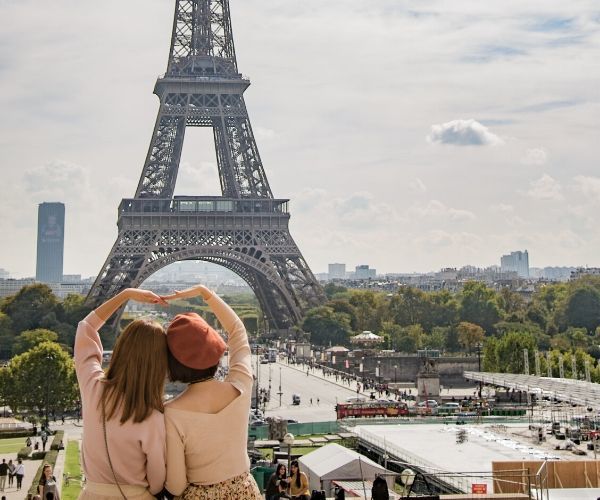
For most people at the moment, travel is the last thing on their mind, understandably. For others (like me), it’s something they live and breathe. Indeed, this current climate has only made me more determined to save this industry and keep inspiring people across the globe to reach for new experiences and explore. I hope that this article will inspire you to keep dreaming, stay positive and look forward to the future!
Paris is widely considered to be the capital of fashion. The French have been known for their ability to start style trends (whether fashion or culinary) ever since the epoch of Louis XIV at the court of Versailles.
No matter your reasons for visiting Paris, whether it be with family, on business, or a solo trip – you’ll probably want to do so in style. Style in the sense here means more than just clothes, it is also about attitude and an overall way of being. Achieving that French je ne sais quoi can seem a bit intimidating for visitors to the City of Light- but it is actually more achievable than you might presume. We’ve broken down all the ways you can visit Paris in style- from the outfits you pack in your suitcase, to where you decide to stay, how you pass your time in the city and perhaps one of the most important – where you dine, blogs Maria Pasca.
What to pack
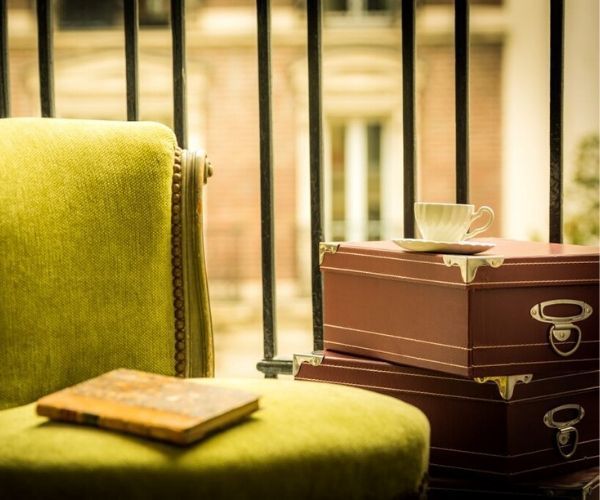
First comes first, you’ll want to be quite methodical when it comes to choosing what to pack in your suitcase. Whilst in Paris, if you want to blend in with the locals, you’ll want to dress appropriately. In Paris, you will never witness the natives wearing athleisure wear unless they are actually working out. There are a few cardinal rules to follow. The French, and Europeans in general, tend to dress up more so than what Americans may be accustomed to. First, despite how comfortable yoga pants are, most Parisians will only actually wear them inside the yoga studio (they’ll usually change their clothes at the studio). And even in the heat of summer, you can forget the French wearing flipflop sandals. These are only considered appropriate for the beach- for the practical reason that if you’re walking the streets of the city your feet are bound to get really dirty in flip flops.
Because you’ll want to make sure you’re appropriately dressed and your outfit doesn’t scream tourist, you’ll want to follow these French fashion tips. Start with the basics- jeans are your best friend. They are casual but can be dressed up with blazers, sweaters, a fashionable top and worn with boots or high heels. For the rest of your Parisian wardrobe opt for items of clothing that are mostly neutral colors – black, navy, tan and white. You can therefore mix and match several outfits and won’t have to worry about bringing an oversized suitcase to the airport. To these basics, add accentuating touches using brightly colored scarves and jewelry (both of which are easy to pack!).
For your shoes, as you likely will be spending a lot of time on foot exploring the city or wandering the galleries of its world famous museums, you’ll want to be as comfortable as possible. But this doesn’t mean you have to sacrifice style. The French are crazy about baskets (sneakers), so choose trendy pairs that not only feel good on your feet but catch the eye, too.
As for beauty, the French seem to have deceivingly simple beauty routines. It is true that French women wear less makeup than their American counterparts, but what is valued here in France is a more detailed attention to skin and hair care. Preserving what nature gave you by using top quality skin and hair care products seems to be the rule the French follow. This rule does not just apply to women, Parisian men are known to be very conscious of their skin and hair care, as well.
If you’re taking excellent care of your skin, no need to cover up with lots of makeup. Take the best care of yourself possible and you’ll be already starting with a beautiful canvas, to which all you need to add is bright red lip stick.
To give your Parisian vacation a bit of style – think about choosing a hotel or private apartment that really speaks to the type of experience you would like to have while visiting France. Whether it be one of the iconic five star luxury Parisian hotels (The Four Seasons George V, Plaza Athenee, The Ritz Paris, Le Meurice)…or a hip boutique style hotel like Hotel Particulier in Montmartre, where you’re staying stages the important backdrop for your trip and will set the tone for your experience and over all mood. If you opt for staying in a private apartment, you’ll really have the opportunity to live like a Parisian. Consider looking for a private apartment rental in stylish neighborhoods like the Marais or St Germain-des-Pres.
Beat jet lag
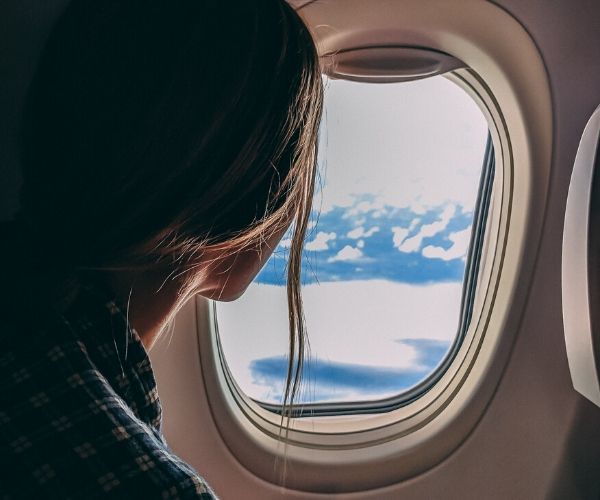
Flights arriving to Paris from the US and Canada depart in the evenings and land in the morning, usually quite early. The key to having a great arrival to France without being in bit of travel fog is to ensuring you get great rest on the plane ride over the Atlantic. It is certainly worth it to travel by first class if it is within your budget, or to upgrade to seats with more leg room. That way, when you arrive in Paris you’ll be feeling refreshed.
If you do find yourself very tired during your first day in Paris because of the time change, try your best not to give in to the tiredness and avoid sleeping. If you can make it through that first day and get to bed at a relatively normal time, you’ll usually wake up at a regular time in the morning on your second day and be ready to take on the city.
For your arrival to Paris, whether by plane or by train, navigating the RER train and the metro with large suitcases can be quite a hassle. You may consider hiring a private car service that will meet you at the airport or train station and bring you to your hotel or apartment rather than having to wait in line for a taxi. Alternatively, there are also shuttle buses that run directly from the airports to landmarks in central Paris like the Eiffel Tower, Arc de Triomphe, Gare de Lyon and Opera. These buses are quite comfortable and have Wifi onboard.
Now that you’ve arrived in Paris and are settled in your hotel, how will you spend the rest of your visit to the City of Lights in style?
Private museums and custom tours

Depending on what your interests are, Paris has something for everyone. If you happen to be a museum aficionado, you might consider reserving a high quality private tour for you and your party. These are especially convenient when visiting such monuments as the Louvre Museum and the Chateau of Versailles. When visiting in a group, you’ll typically have a special entry and avoid long waits in line. Depending on the agency you choose, most private tour guides will typically meet you at your Parisian accomodations and then travel with you in a chauffeured car or van to the site you will be visiting.
Even if you’ve been to a museum before, touring with your own private guide is the best way to experience French monuments. You’ll be able to ask questions and learn so much more than you would otherwise get from an audio guide.
In addition to museums and historical sites, many agencies also offer customizable itineraries for your visit, so you can pick and choose what you’re going to see and do in Paris based on your particular interests. Plus, private guides will always have local insider knowledge about the best restaurants and spots to try in Paris during your visit.
Fine dining

Paris has no shortage of fine dining. The French capital boasts over 100 Michelin starred establishments within the city. From traditional French cuisine, to contemporary and fusion – there is choice that will suit everyone’s taste.
The following Parisian restaurants all have three Michelin stars and are certainly worth the visit while you’re in Paris. In addition to award-winning gastronomic fare, these restaurants each possess exquisite style and luxurious ambiance:
Arpege – chef Alain Passard’s restaurant has been open for over 30 years and features organic vegetable inspired dishes that come straight from the restaurant’s own vegetable gardens.
Guy Savoy – located in an 18th century neoclassical building and former home to the Paris Mint, Guy Savoy is famous for its classic cuisine with contemporary twists.
L’Ambroisie – within the elegant Place des Vosges in the Marais, L’Ambroisie has had three Michelin stars for 30 years and proposes traditional French dishes.
Alléno Paris au Pavillon Ledoyen – The Pavillon Ledoyen is located in the gardens of the Champs-Elysees in and has been the home to the prestigious restaurant since 1792. Chef Yannick Alleno is known world-wide for his audacious modern cuisine.
Alain Ducasse au Plaza Athénée – the iconic restaurant features a natural Haute-Cuisine menu of fruit and vegetables that have been hand picked in the morning and then make their way onto your plate that evening.
Épicure – located in the elegant Le Bristol Hotel, Epicure is known for unforgettable French cuisine.
Le Cinq held within the Four Seasons Hotel George V is the sophisticated Le Cinq restaurant, proposing refined French cuisine made with modern techniques.
Pierre Gagnaire – this posh restaurant located not far from the Champs-Elysees is known for having the most inventive menu in Paris.
Le Pré Catelan – nestled within the Bois de Boulogne in the western part of Paris, Le Pre Catelan has been around since 1875 offering haute cuisine in a bucolic setting.
While it isn’t hard to find extraordinary gastronomy in Paris in stylish settings, don’t forget that in addition to fine dining another great option is to visit one of the city’s many open air markets. Experience the joy of choosing fresh vegetables, poultry and meat, and then finding the perfect cheese and wine. As you walk down the cobblestone streets, baguette in hand, you’ll really begin to feel like you’ve adopted the Parisian style.
Virgin Australia suspends all international flights

Virgin Australia has made plans to ground its entire international fleet this morning, as well as suspending all international routes from the end of March. Additionally, it has reduced its domestic capacity by 50% in a move to prevent further financial losses due to the coronavirus. The airline expects operations to return to normal by June 2020.
Virgin Australia has taken unprecedented action against the harsh market conditions and suspended all of its international flights starting from the 29th of March. The airline is following advice given by the Australian government to no longer fly to foreign countries.
Specifically, the Australian government issued a new warning late on Tuesday night, 17th of March, that all countries in the world are now considered stage four risk destinations. Thus, Australian airlines are not allowed to operate to them.
In terms of International routes, Virgin Australia will be suspending the following destinations:
Melbourne to Bali on March 29th.
Brisbane to Tokyo-Haneda on March 29th.
Melbourne to Los Angeles on March 20th.
Other international flights, such as Virgin Australia’s popular Sydney to Los Angeles route and New Zealand destinations will continue to fly until March 29th to enable foreigners and Australians to return home.
Additionally, the group will be reducing domestic operations in Australia by around 50%. These will not be route suspensions, but just reducing frequencies between capital cities such as Sydney, Melbourne, and Brisbane (which have hourly flights). These changes also affect the group’s low-cost arm Tiger Airways which will also see capacity reductions.
After the end of March, the equivalent of 53 aircraft (including all of its widebodies) will be grounded. This includes grounding of five Boeing 777, one Airbus A330 and fourteen Boeing 737 aircraft from the Group’s international fleet and twenty Boeing 737, six A320, two ATR and five Airbus A330 aircraft from the Group’s domestic fleet.
To help keep the company stable, the CEO has fast-tracked employee holidays, unpaid leave and redeploying staff onto other projects (such as focusing on aircraft maintenance). The CEO team is also taking no bonus’ this year and has had its salary reduced by 15%. The company has not ruled out some redundancies, however.
If you are booked on a Virgin Australia flight in the near future, the airline has the following steps in place.
Passengers who have bookings for flights through till the end of June 2020 can change their flight to a later date or location without a fee. Those who want to cancel can get travel credit without issue.
Passengers who are scheduled to fly on a canceled service will be emailed or otherwise contacted in the next 14 days.
If you have booked through a travel agent, then they will be your point of contact regarding your booking.
Due to the large number of people changing their bookings, Virgin Australia recommends only trying to contact them if your flight is in the next 24-48 hours.
Three Chinese airlines resume SFO flights

As China sees first signs of recovery, flights return. But who will fly? While most U.S. airlines are cutting flights to historically low numbers because of the coronavirus pandemic, three mainland Chinese carriers plan to resume non-stop flights to San Francisco International Airport this month, a move SFO officials said: “marks a hopeful change in direction.”
The resumption of flights is one of several early signs that the worst could be over in China, meaning the crisis will eventually come to an end here, too.
China Eastern will resume a daily non-stop flight this month between its hub in Shanghai and San Francisco using a Boeing 777-300ER jet. Flights are expected to start on Saturday, March 28
Strangely, flights were not yet available for booking at the time of this writing on the airline’s North America website.
Air China plans to resume non-stop flights between Beijing and San Francisco this Saturday with flights operating on a limited schedule, and on sporadic days throughout the week.
Economy class fares are selling for north of $3,000, a staggering price tag considering round-trip fares on this route were typically sub-$600 before the coronavirus crisis.
Air China did not entirely stop serving SFO during the peak of the outbreak in China. It flew flights four times a week to Los Angeles. After a 90-minute stop at LAX, those flights continued north to SFO. The Chinese carrier had a similar arrangement on the U.S. East Coast: flights flew from Beijing to New York’s Kennedy Airport and then onwards to Washington-Dulles Airport and vice versa.
China Southern intends to resume its non-stop flight from Guangzhou to San Francisco on March 29. It will operate four times a week, on Sundays, Mondays, Wednesdays, and Fridays using Boeing 787-9 Dreamliner jets.
This flight had originally included a stop in Wuhan, where the outbreak began, but this resumption will not include a stop in that city.
Fares on this route aren’t cheap either, running on average for a round-trip flight in the $2,500 range in economy class.
These high price tags underscore the scarcity (definitely not the demand) in non-stop flights between the U.S. and China. In the weeks following the outbreak, and with the onset of Trump administration travel restrictions, U.S. carriers hastily suspended all their flights to China.
Those restrictions still remain in place and have expanded to include the U.K., Ireland, and European countries in the Schengen area.
Foreign nationals who have been in mainland China for the last 14 days are banned from entering the United States. U.S. citizens and legal permanent residents are allowed to return home but must quarantine for 14 days after their arrival.
So who might book these flights? Undoubtedly, it will be the people who urgently need to travel internationally.
Perhaps it’s the Americans who have been in China for the past two months – there are many who split their time between family in the mainland and Northern California – or the foreign nationals here on the West Coast who have been unable to return home until now.
And of course, those big jets have big cargo holds, and there is plenty of pent-up demand for U.S. and Chinese products on both sides of the Pacific.
All three airlines are majority-owned by the Chinese government (Air China is the national flag carrier), so operating these flights at near-empty loads and at a financial loss should not be much of a concern for each carrier. The likelihood is these flights will be mostly empty, and that’s okay when you have the deep pockets of the Chinese government to finance these flights.
With China slowly turning the corner as it relates to the pandemic, it may be the safest place to be in the months ahead as countries elsewhere grapple with the terrible consequences of this virus. www.sfgate.com

